Introduction –
For the last few years, I have visited the Erlangen Beer Festival, the first year with a stop in Prague, then the previous year with a stop in Kosice before heading to Nuremberg. Erlangen Bergkirchweih is one of the oldest festivals in Germany, it is similar to Oktoberfest but usually with better weather. This year’s trip would be slightly different in that I would primarily stay in the town of Erlangen with no stays in the rest of Europe.
The trip was complicated by weight & balance, severe weather forecasts across Europe and carrying first-time general aviation passengers in the form of family and friends, so the bar for an enjoyable, safe and comfortable trip was the highest priority. Having an IR does not give you a passport for flying in dangerous weather, such as Thunderstorms. But it enables safe passage from A to B with IMC conditions present and is a good tool for travelling around Europe when the weather is not VFR conditions, so this trip did push the boundaries with late-spring convection.
The Plan –
We had a plan to fly on the Thursday, 23rd of May, and could only depart in the late afternoon due to aircraft availability. The original plan, if the weather was mostly benign, would be to fly via Cologne or Luxembourg and then onto Nuremberg. Unfortunately, both options that week became challenging and with weight and balance issues, I could not carry additional reserves that I felt comfortable with.
The first plan was routing via Luxembourg, then onto Nuremberg. This then became Cologne, and up until 24 hours before the day, this was the ultimate plan. Sadly, the weather had other ideas. We would fly back on the Sunday after 3 nights in Bavaria, and most likely on a similar route to the outbound flight.
Airport Choices –
The choice of airport for IFR flights is determined by several criteria, such as reasonable handling fees, accessibility (both customs and police), and a recently implemented restriction: The airport does not allow aircraft categorised as Category A. Airports like Barcelona El Prat prohibit this, and in some cases, even though they are not allowed to, they do so informally and charge you outrageous costs. For the kind of aircraft we operate, Jet A1 availability is not a problem at the majority of significant international airports.
Original Plan –
We would fly to Erlangen with one fuel stop in Luxembourg before continuing to Nuremberg. This would be the ideal scenario with flight times 1 hour 45 minutes in length each, or up to 2 hours. Performance-wise, we could carry slightly more fuel on departure at a major airport for reserves than at Stapleford, where the runway is far shorter and uphill.
Luxembourg ELLX
Luxembourg-Findel Airport is the sole airport located in the Grand Duchy of Luxembourg. It ranks as the 25th busiest airport globally and the 5th busiest in Europe for freight traffic. We visited Luxembourg on a previous trip.
Second Option
The other alternative was further north by 150 miles in the form of Cologne. But a final decision would be made closer to the day, with quotations for both airports secured and the ability to change plans last minute.
Cologne Bonn Airport EDDK
Cologne-Bonn Airport is the seventh-largest passenger airport in Germany and the third-largest in terms of cargo operations. The airport has three runways and is ideally positioned for a tech stop, being slightly north of Luxembourg and en route to Nuremberg. The airport has a General Aviation facility and would accept customs and extra-Schengen from the UK.
Nuremberg EDDN –
There are two reasonable options: the first was IFR – Nuremberg Airport, the second-busiest airport in Bavaria after Munich Airport and the 10th busiest in Germany or the alternative was Herzogenaurach Airport which was VFR. This year, flying into Nuremberg was different, however, with a NOTAM for some construction. It reduced some of the commercial stands but allegedly impacted some of the capacity for GA, requiring a PPR slot before flying inbound.
> A0818/24 NOTAMN
NOTAMS for WIP at EDDN
> Q) EDMM/QFAAP/IV/NBO/A /000/999/4930N01105E005
> A) EDDN B) 2403040000 C) 2404302359 EST
> E) PPR FOR ALL GENERAL AVIATION FLIGHTS EXC LOCAL BASED ACFT. FOR
> PERMISSION CTC +49 911 937 1322, 72H BEFORE PLANNED ETA.
> CREATED: 12 Feb 2024 14:52:00
> SOURCE: EUECYIYN
> A1054/24 NOTAMN
> Q) EDMM/QFALT/IV/NBO/A /000/999/4930N01105E005
> A) EDDN B) 2403010000 C) 2405312359 EST
> E) AD IS NOT AVBL AS PLANNED ALTERNATE DUE TO WIP AND LTD CAPACITY.
> EMERGENCY AND HOMEBASED ACFT NOT AFFECTED.
> CREATED: 23 Feb 2024 16:30:00
> SOURCE: EUECYIYN
Handling/Airport Quotations –
The initial plan was to make one stop in Luxembourg or Germany at a push before flying onto Nuremberg; the fuel stop was required because of the weight of all 3 of us and a weekend’s worth of baggage meant this was a must and we couldn’t fly as high (Fuel burn) and the performance would be less than I usually get so a fuel stop was a must, and that was without the complexities of convective weather.
We will aim to arrive by 1545z on Thursday, 23rd of May 2024, departing within the hour to Nuremberg – EDDN/NUE (1645z). We will refuel with JetA1 (AirBP Card) and would like to clear SCHENGEN with customs/police/border, as I’ll have two passengers on board.
Quotation from BAC LUX
This is an estimate with 3xPOB (two passengers and one PIC). IFR would be used for both the arrival and departure of the flight.
Airport charges and handling fees are shown separately on the bill; together, they amount to €178.53, or almost £151, which is a lot less than the previous visit due to LUX offering 50% off for fuel stops.
Nuremberg EDDN
There were no quotations for EDDN, although, unlike the previous years, there was a NOTAM requiring a PPR to visit. But it’s still prudent to check the fees before embarking on a trip or check with the GAT.
Airport Charges (airport-nuernberg.de)
Quotation for an alternative Fuel stop – Cologne
On Monday, the weather forecast for Luxembourg didn’t look ideal, so I looked at Cologne Bonn Airport. The estimate includes landing fees, variable pax fees, and other fees added, such as position fees, terminal charges and infrastructure charges, which made a 5 euro landing become €162.53
Accommodation –
The NH Erlangen is a modern 4-star hotel located in central Erlangen, conveniently right by the city’s lively pedestrian zone, within short walking distance of many attractions, including the Conference Center, university, theatre, boutiques and a shopping centre. The hotel is roughly 30 30-minute walk from the Berg.
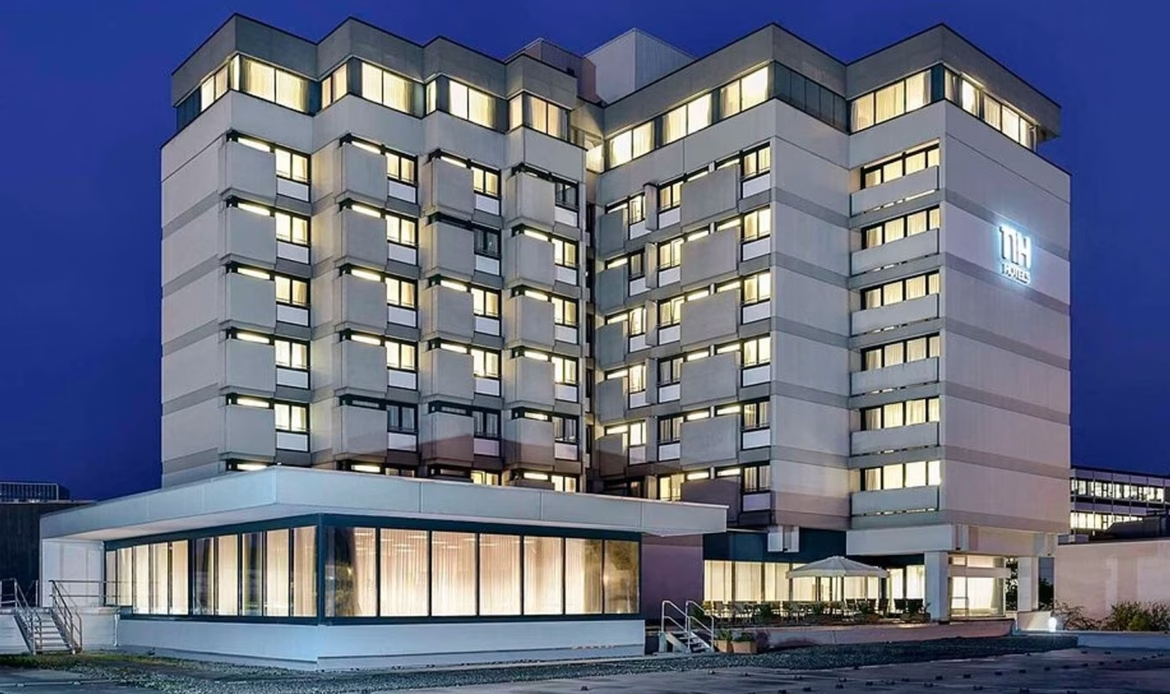
Comfortable rooms are designed for a restful night’s sleep, boasting a friendly bar serving drinks, snacks and meals, as well as a 24/7 fitness area and sauna – this modern hotel has everything you need.
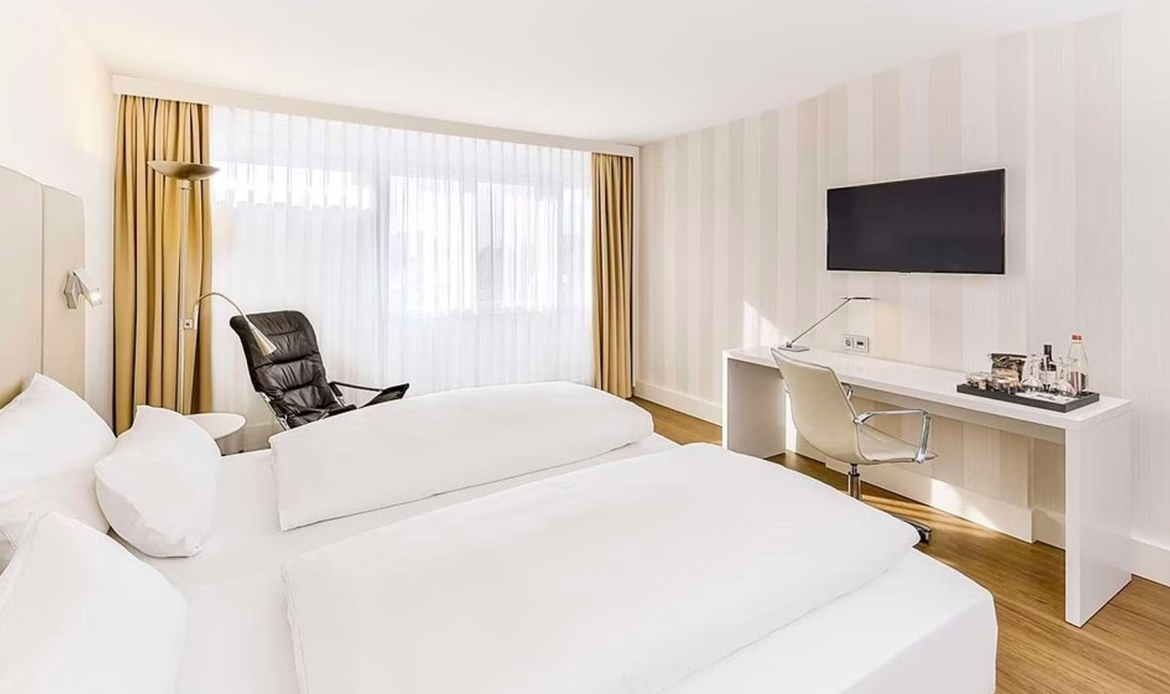
Weather Forecast –
The weather forecast for the outbound trip was complicated, with a building anticyclone over Scandinavia and low heights over west/central Europe creating some kind of high-over-low blocking pattern. This static pattern features weak pressure gradients over most of Europe, with slow-moving convection as the main risk. Signals pointed in Southern Germany for slow-moving and clustering convection well into the night with heavy to excessive rain, so this was a huge factor to be concerned about, and time was really of the essence as it was forecast to hit after our planned arrival.
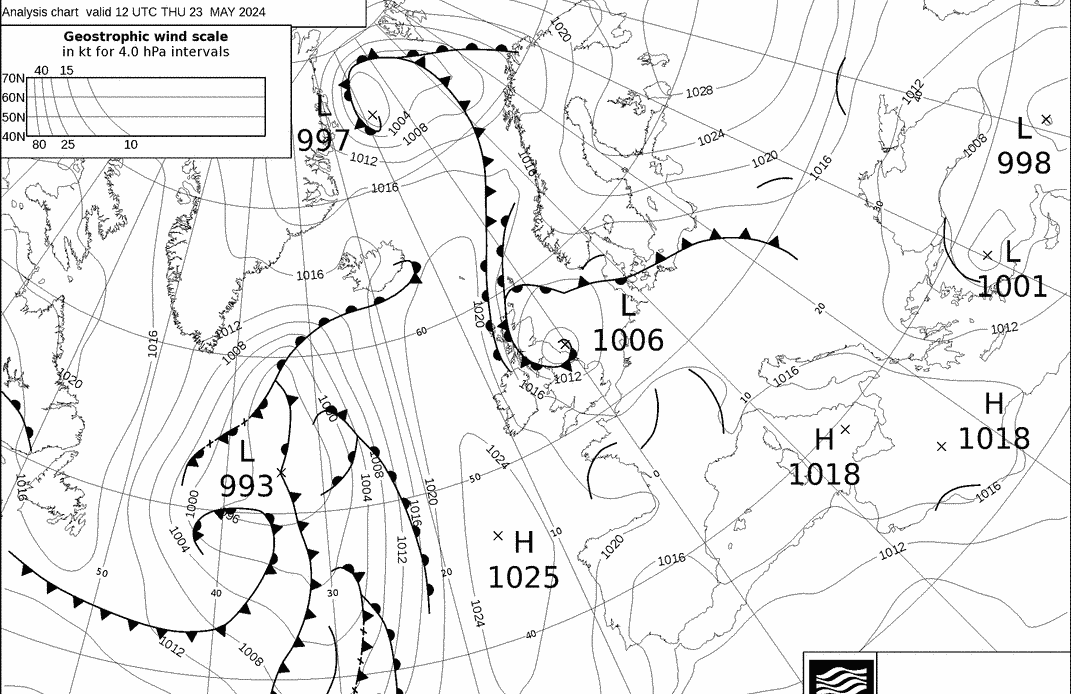
TAF AMD EGSS 230526Z 2306/2412 25009KT 9000 BKN010 BECMG 2306/2309 9999 SCT025 PROB30 TEMPO 2402/2408 BKN012=
TAF for London Stansted, Southend, Rotterdam, Polderborn and Nuremberg on 23rd of May 2024
TAF EGMC 231055Z 2312/2321 24012KT 9999 SCT030=
TAF EHRD 231110Z 2312/2418 24012KT 9999 SCT020 BECMG 2318/2321 16004KT CAVOK PROB30 2402/2405 2000 BR BCFG TEMPO 2411/2418 6000 SHRA RA BKN040 FEW045CB PROB40 TEMPO 2411/2414 3000 SHRA TSRA SCT025CB BKN030=
TAF EDLP 231100Z 2312/2412 27006KT 9999 SCT030 BECMG 2315/2318 VRB03KT TEMPO 2409/2412 SHRA BKN015CB BECMG 2410/2412 03005KT PROB30 TEMPO 2410/2412 3000 TSRA BKN010CB=
TAF EDDN 231100Z 2312/2412 32005KT 9999 FEW040 BECMG 2319/2322 VRB03KT TEMPO 2322/2402 SHRA BKN030TCU PROB40 TEMPO 2322/2324 20015G25KT 3000 TSRA BKN012CB PROB40 TEMPO 2402/2410 RADZ BKN012 BECMG 2410/2412 30005KT=
Change of Plan –
The weather on the eve of the trip to Germany deteriorated with low pressure making inroads from the northwest of Europe, meaning that I had a few hours to make decisions that would eventually make a safer trip. It was a close call to cancelling, but having more data, and more accurate data, I was able to make better decisions based on the forecast of the weather.
Rotterdam Handling – Vliegclub
As stated in the AIP of the Netherlands, confirmed handling is mandatory for all General Aviation traffic arriving at Rotterdam The Hague Airport for security reasons. The landing fee for the DA40 is €27.59, and a standard handling fee of €30.00, including VAT. A total of €57.59. More details can be found on the club’s website.
Polderborn Quotation
Initially, it was difficult to find details of Padeborn’s Ops Department, but eventually got the details from the correct phone number of Airport PAD Operations- [email protected]. The fees were very reasonable: €13.33 for landing and €4.17 for short parking. A total of €17.5
Route via Rotterdam and Polderborn
The original routing via Luxembourg and then Cologne was never going to work; this was due to severe weather through that area, with thunderstorms forecast with tops in excess of FL350 (35,000ft)—something that neither I nor my passengers would want on a flight in a small aircraft. In May, the sun is almost at its strongest, so the environment for convective weather, especially at the end of the month, can be unpredictable.
With less than 24 hours till the flight, I contacted Rotterdam – an efficient airport, but also an expected stop that would require a further stop due to the forecast weather across the Frankfurt Area. With no safe route through France, time not in our favour, and the more direct routing down to Nuremberg proving to be fairly difficult with airspace restrictions owing to severe Thunderstorms across the Langen FIR, any choice for stops would need to be at least unlikely to be slot-controlled or constrained.
The fees for Rotterdam and Polderborn are below.
Polderborn was chosen due to the quick response from the email and the fact that the airport doesn’t receive much traffic, and the weather to the North was much clearer. The threat, however, of the most severe weather was coming up from Switzerland & Austria into Munich. Time was not on our side.
Flight to Rotterdam –
We arrived at Stapleford with plenty of time, and to calm any passenger’s nerves, we had a lunch that would keep us going till a Sandwich that we had for later on in the flight and or dinner at Erlangen. With a 1245z a.m. off-block time (13:45 local) and plenty of time to relax before the flight, we awaited the arrival of the aircraft from Europe in the confines of the clubhouse.
A few things delayed our departure, one notably me discussing the weather with the incoming crew and our plans for the flight out, which we had discussed. They had mentioned to me lots of convection in the form of rain showers throughout their trip from Germany, including avoiding weather outbound from Kotritjk. Luckily, my late decision yesterday to fly further north, avoiding the bulk of this weather, proved to be a blessing in disguise.
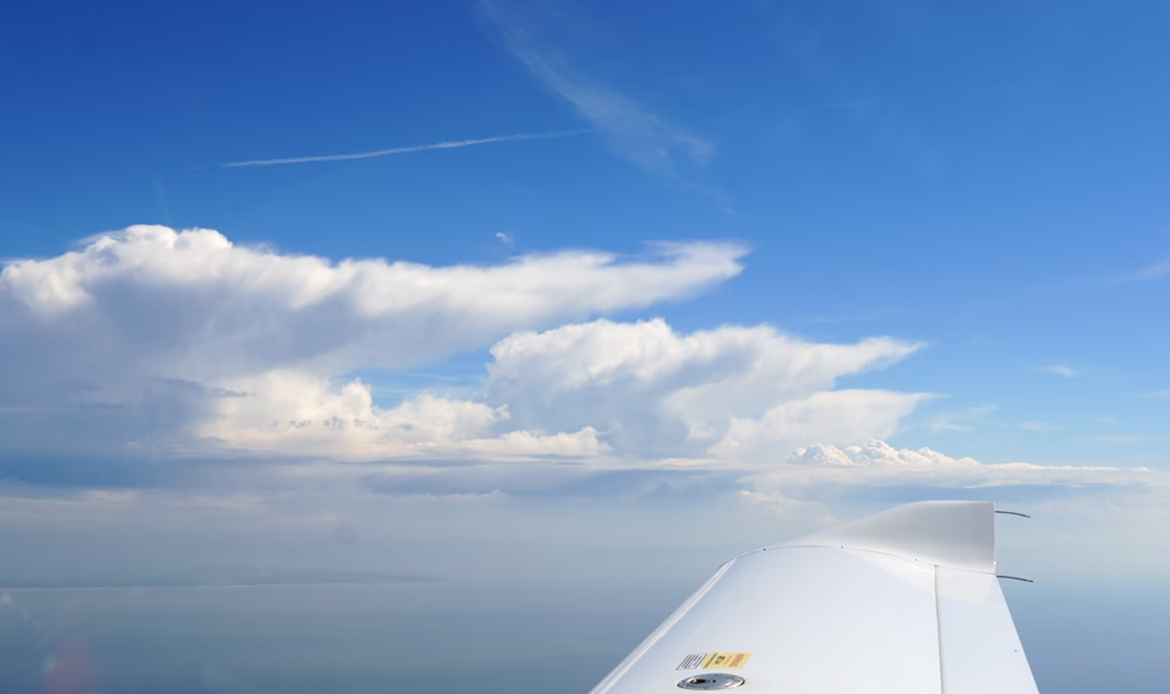
The other notable delay was passenger handling, the length of time it took to place baggage and the mobility of the customers getting into the aircraft and being comfortable. Since they were first-time fliers in General Aviation, it took more time than usual to carefully show them the many safety procedures that would be required for this flight, including donning a lifejacket. This meant we did not get airborne till 1305z. (14:05 local), Something that wasn’t needed with the curfew of 1930z (21:30 local) for the General Aviation Terminal (GAT).
We departed from runway 21L and climbed the usual route to join the airway at BRAIN. Once in the turn and tracking towards the intercept point, we were cleared directly to BRAIN. This was shortly followed by a climb into controlled airspace, initially to FL70 before more gradual climbs to FL130, our cruising level for today’s flight. We would have a decent tailwind today, and whilst I could have gone to FL150, there weren’t much more significant winds vs FL130, so we wouldn’t have got much benefit from the further 5-6 minutes climbing when we were very heavy.
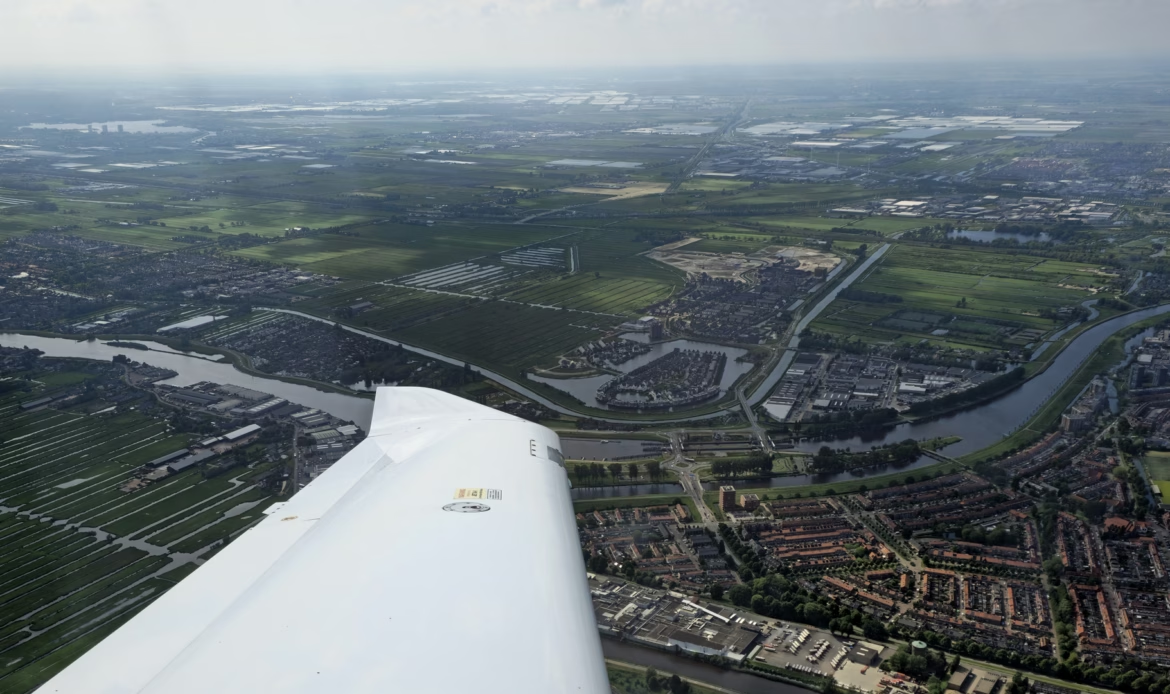
Initially, we were routed towards CLN (Clacton VOR) before getting direct REDFA – strangely, we were transferred to one more London Control sector before handing off to Amsterdam Radar. Shortly after, another shortcut direct waypoint MASOS. The frequencies were fairly saturated, so I suspect there were more controllers and, thus, more sectors online than usual to cope with the demand.
We were handed over to Amsterdam Radar, and the frequency was less busy, but in the area we were in, it wasn’t that busy, with mostly Amsterdam-London flights. Above that is The Maastricht Upper Area Control Centre (MUAC), which manages the upper airspace (from 24,500 to 66,000 feet) over Belgium, the Netherlands, Luxembourg and north-west Germany – one of Europe’s busiest and most complex airspace areas. However, due to our flight level of FL130 (13,000ft), we would not be with that ATSU.
The view of convection was slowly coming into view, and surprisingly, a lot more weather was further north than the forecast initially predicted. This required me to get my thinking cap on and think of some what-ifs, but there were very limited options except conducting the flight VFR-low level outside of the convective cloud, which is a huge challenge, especially with 2 passengers onboard.
My experience of flying VFR in Europe is fairly limited and in the very low single digits of hours flown, and this is purely down to the benefits the IR has that it is a no-brainer to get high up, on oxygen and fly for lengthy periods, avoiding severe weather with generally more smooth flying conditions. So the decision to press ahead with IFR flights and outclimb any convection was the priority, but there were plenty of divert opportunities if that failed.
We got a late descent into Rotterdam, which was exacerbated by the airspace structure of Amsterdam. Not ideal for my first-time fliers, who now had to deal with rapid rates of descent, something that would be painful to the ears. ATC continued the request for higher rates of descent, which I tried my best in the comfort of my passengers, but whilst this is not normally the case, it was challenging.
The weather forecast for Rotterdam changed as we flew out to mainland Europe, with forecast CBs now in the mix with the possibility of Thunderstorms, but with those chances increasing, the pressure to get a move on was important, as any delay could mean encountering severe weather or getting stuck in the Netherlands.
Initially in the descent, we were vectored towards the weather’s northern edge before requesting a vector away. Annoyingly, we were landing in the reciprocal direction, so this added time to our arrival as we had to fly towards the other side of the city before making our approach. This is something you should factor in, as wind directions are not always preferable for timings, as this can add to the time pressures, especially when the airport is busy.
We were vectored downwind for Runway 24 before making a base leg turn some 15 miles out. This was due to jet traffic ahead of us, which was faster and had priority over us into Rotterdam, the airport being far busier than when I last visited. We then flew the RNP for runway 24, which was very bumpy as the peak heating started to kick in and the thermals hit us as we flew the instrument approach.
We touched down at 1435z, some 15 minutes after we had planned and taxied into the GA club for customs and fuel, although there was a slight caveat for refuelling this afternoon. With 25 minutes to clear customs, refuel and get airborne again, this was proving to be a challenging day.
ATC Flight plan and route flown –
N0128F130 DCT BRAIN P44 CLN L620 REDFA
Filed ATC flight plan for EGSG-EHRD
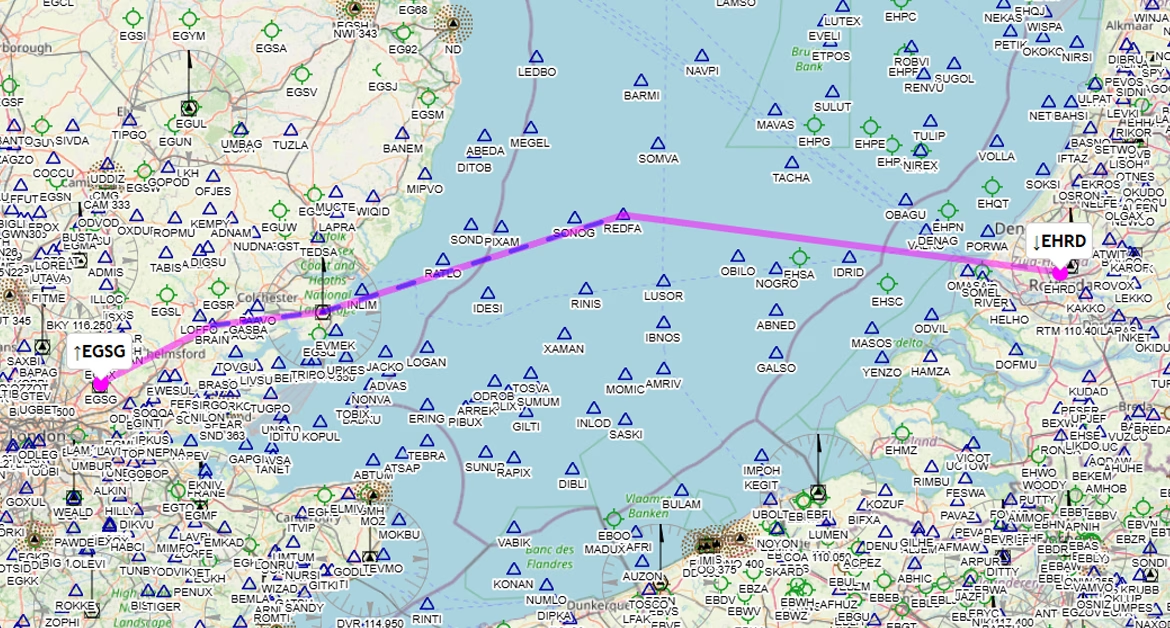
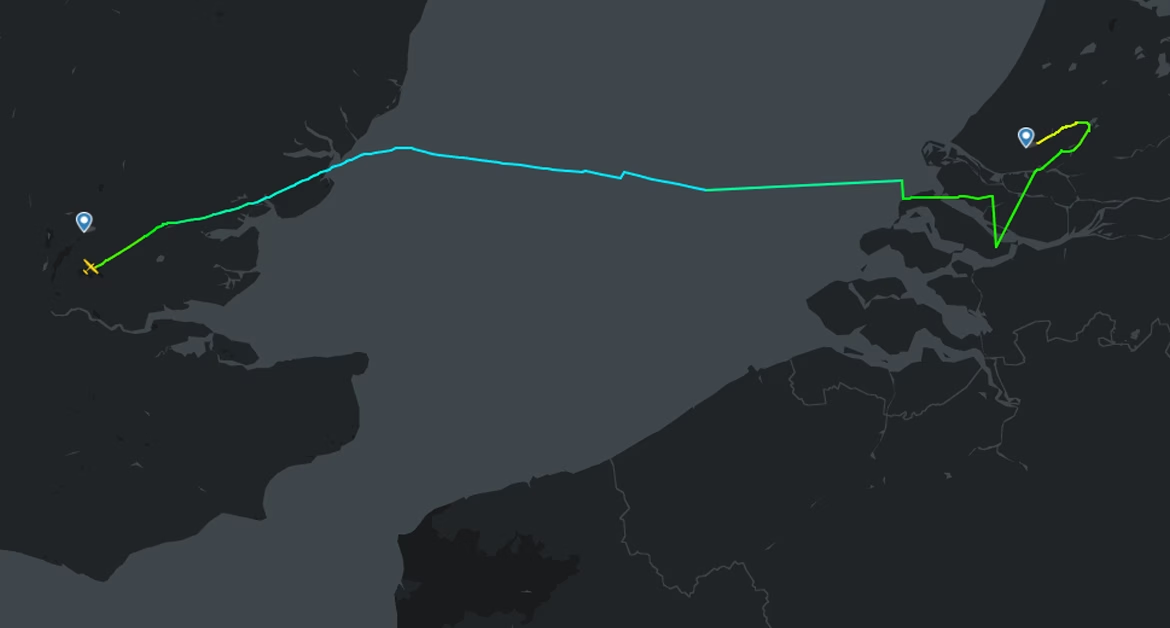
Flight to Paderborn –
Once we had cleared customs and prepared the aircraft for the next flight, we were pushing for time and, with the added delay of refuelling, unable to take place at the Aero Club. Because of this, we had to taxi to Foxtrot Apron and arrange refuelling with Jet Aviation, who explained there was a queue. This wasn’t ideal as we had a curfew to meet in Nuremberg, where the GAT closed at 1930z.
I had planned all the flights with some allowable buffer, but we had already chewed up 15 minutes on the first sector and with 1500z sailing past, fuelling needed to be completed. I was wondering if I’d ever end up in Bavaria tonight. These multiple stops in one day are challenging, even more so than a long flight to southern France and a long but not as long flight to the Balearic Islands.
We eventually refuelled and taxied for the runway, and as we didn’t have as far to go to the intersection, we then had to wait at the hold for 7 minutes for departures and a further 3 mins for wake turbulence getting airborne at 1541z. A view of the weather on our left and with the right hand turn out, a view of the encroaching weather, our route directly into the weather.

Amsterdam radar initially gave us a route direct to SONEB, but we couldn’t accept it, so our climb was cut back due to interaction with Amsterdam Schiphol, which, from our previous adventure, we discovered was a very busy bit of airspace. As we continued NNE away from the SID, we requested further climb and negotiated with Radar that the only way we could get through the wall of weather preventing us from flying towards Germany was the climb and with the tops around FL110/FL120 the only way to safely fly East was to get up to FL130.
There were a few bits of additional vectoring required from ATC due to the weather, but we eventually got through, and to our right-hand side was the clear picture that we made a very good decision not to fly via Cologne, huge anvils from the associated Thunderstorms trundling through the area, something we aforementioned would not be able to outclimb or avoid very easily.
The remainder of the flight only required a slight deviation, but the weather cleared as forecast as we headed towards Polderborn. It wasn’t long, though, and we had to start preparing for our landing at a new airfield, Flughafen Paderborn Lippstadt. It wasn’t long before ATC allowed us to descend, and we started going through high levels of cumulus before descending back into the murky skies of dust.
We had one more sector to complete, and we would be at the Beer Fest for the 3rd year in a row – a satisfying realisation that was almost upon us. With our flight path taking us northwest of the airfield, there was no difference to the runway in use, but as we overflew Paderborn, the turbulence picked up, a sure sign it was late spring and Summer was coming. The DA40 is practically a powered glider, and with its big wings, thermals can bump you all over the place as you fly at this time of the day.
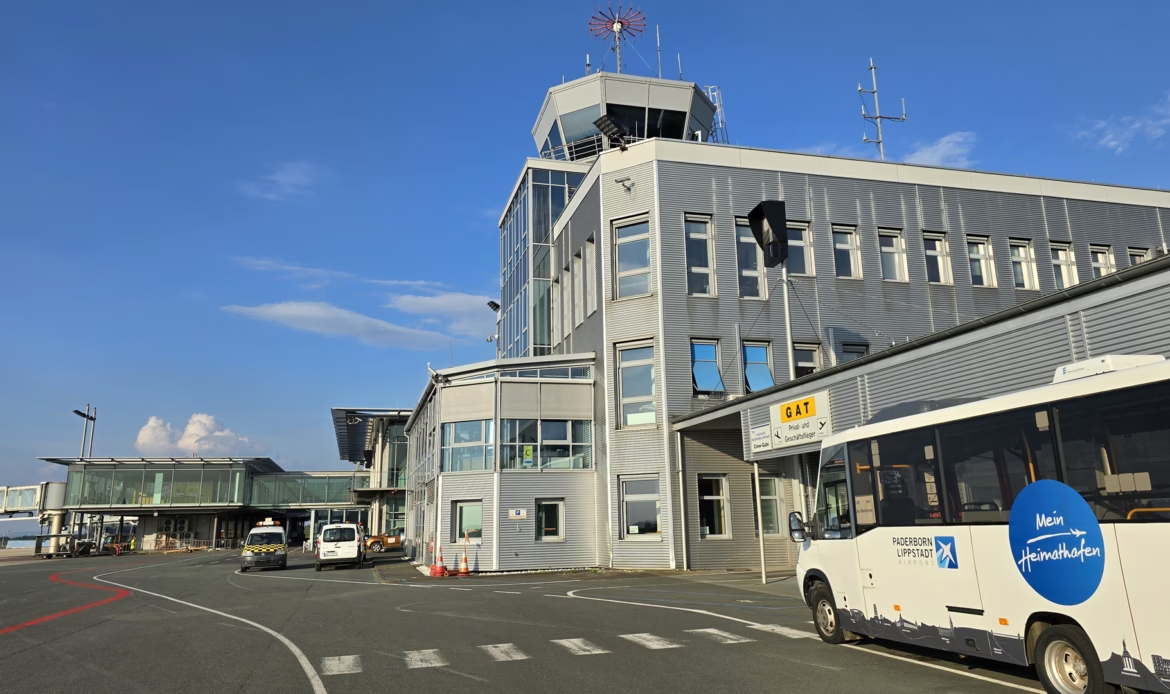
We flew in from the northwest of the airfield, so no difference in the runway in use – but we made a very sporty approach to ensure that we could land quickly for refuelling, and facilities, and to get airborne again for the final sector. We established for ILS runway 24 at Paderborn and landed at 1715z, sadly, our planned departure time from the airfield to Nuremberg was exceeded. This meant we were currently 30 minutes behind where we wanted to be – a lesson to me that I am not easyJet or Ryanair and that I needed to give more buffer during stops, especially when flying into busy airports like Rotterdam, but luckily with Paderborn, nothing was going on.
With a population of over 150,000, the airport isn’t that busy. There are a few seasonal routes from the airport, but for the rest of the year, there is a soon-to-end flight to Munich. The nearest larger international airport is Dortmund Airport, approximately. 70 kilometres (43 mi) to the west.
We vacated Runway 24 and, after some deliberation, managed to find our stand. I was greeted by the tallest German man I’ve ever met, who was an absolute unit but very friendly and had a very firm handshake. Whilst the passengers stayed with the aircraft, I quickly went to the toilet so I would be comfortable for the next sector, which could be the hardest yet.
ATC Flight plan and route flown –
N0128F130 ARNEM L620 EXOBA EXOBA3H
Filed ATC flight plan for EHRD-EDLP
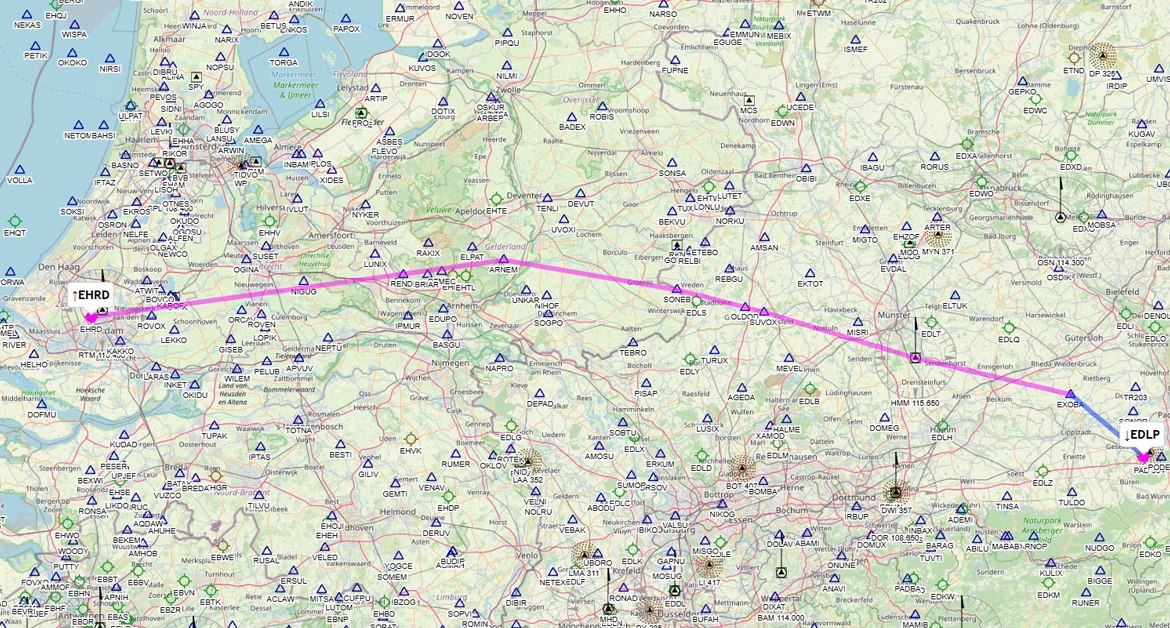
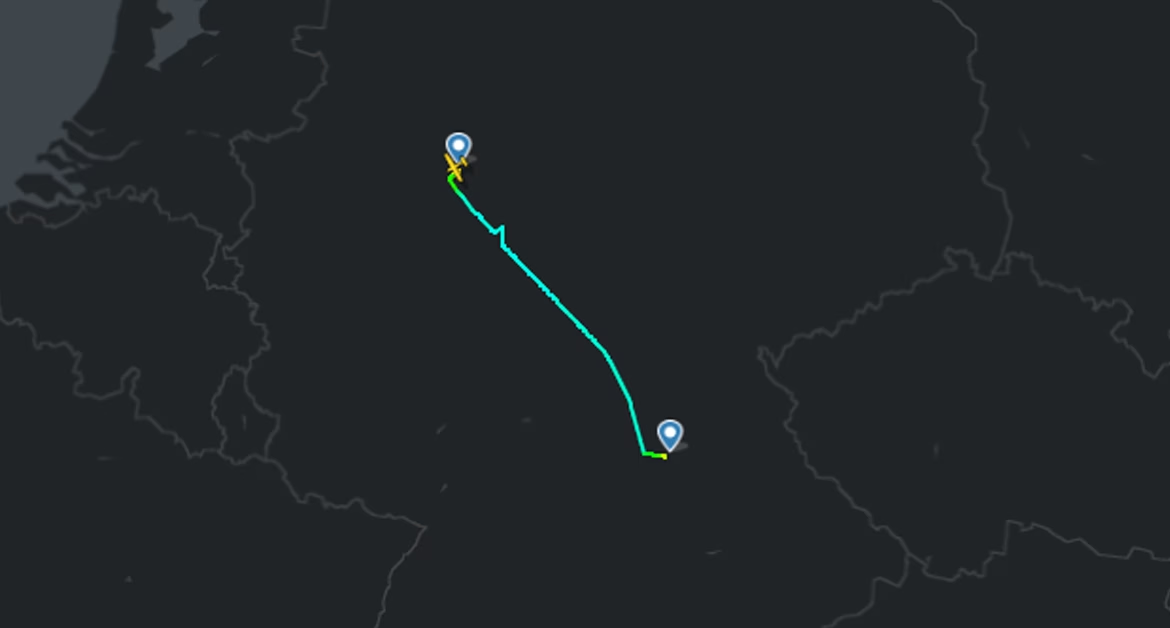
Flight to Nuremberg –
After refuelling the aircraft, I walked over to the terminal building with the operations handler and quickly and mentally prepared for the final sector of the day, a busy but shortest sector of the day at 180 nm. Mindful that the latest weather radar showed the weather closing around Nuremberg roughly when we were about to arrive.
On arrival, we discussed with ATC who delayed our flight plan for us, so that meant getting off blocks at 1740z instead of 1715z, some 25 minutes later than planned. We were eating into the schedule that I had planned, with only 1 hour and 50 minutes to land and park at Nuremberg – this part of the flight had a lot of pressure to get correct.
The operations handler came over to us before we started the engines and gave us a new flight plan from the tower, which was a first. It was printed on a piece of paper, which was quite realistic of what would happen to an airline flight that had an ATC reroute. I suspect this was either due to the weather or military airspace. The flight plan was eerily similar to the one we had filed, bar a few differences.
We taxied for departure for our last sector, completed our power checks and took a rolling departure and were happy to accept a slower climb for more speed, we were still quite heavy even with less fuel needed for our shorter sector but taking into consideration the weather I wanted to beat, this was the best course of action.
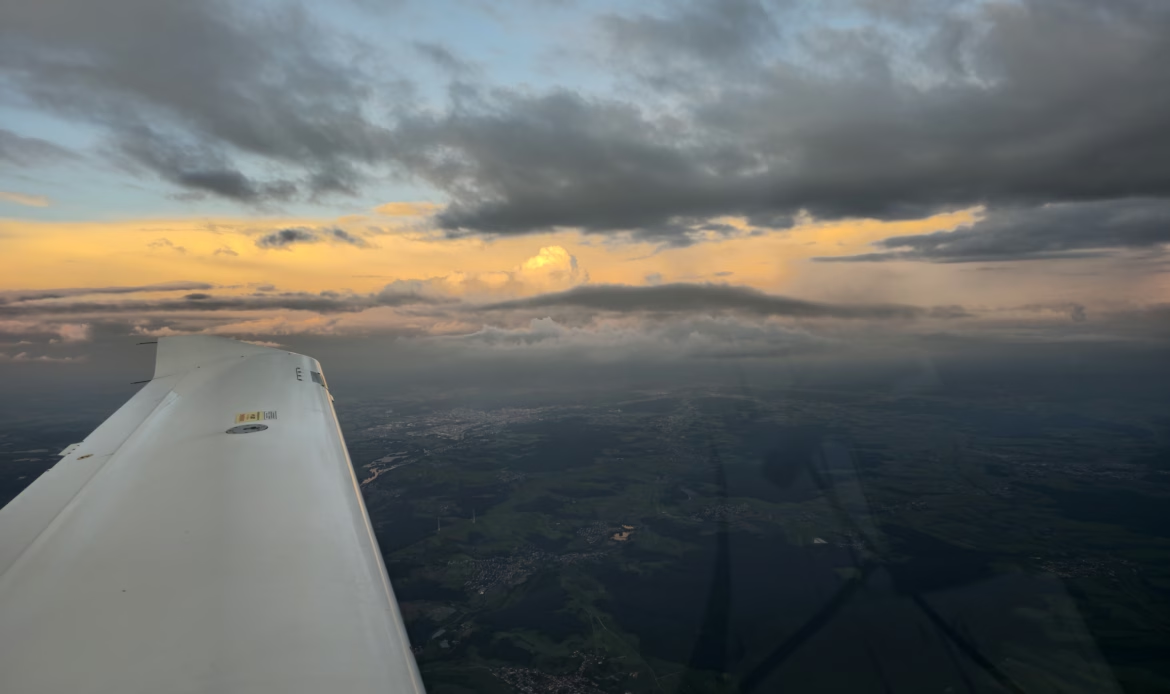
We were given a huge shortcut to a waypoint on the arrival – DN426, which surprised me, but must have been the plan all along for ATC. I initially requested flight level 110 due to the weather, but settled for flight level 100. The reason is that I wanted to maintain VMC, with all the multiple layers coming from the Thunderstorms over the Frankfurt are,a this was important considering the fading light.
The flight from Paderborn to Nuremberg really doesn’t have many options in terms of diverts except GA airfields which in any case, in an emergency I would land at, seeing as customs were not an issue, the only downside would be landing at an airfield with no way out and a weird combination of language barrier and landing at an airfield that is closed in a foreign land.
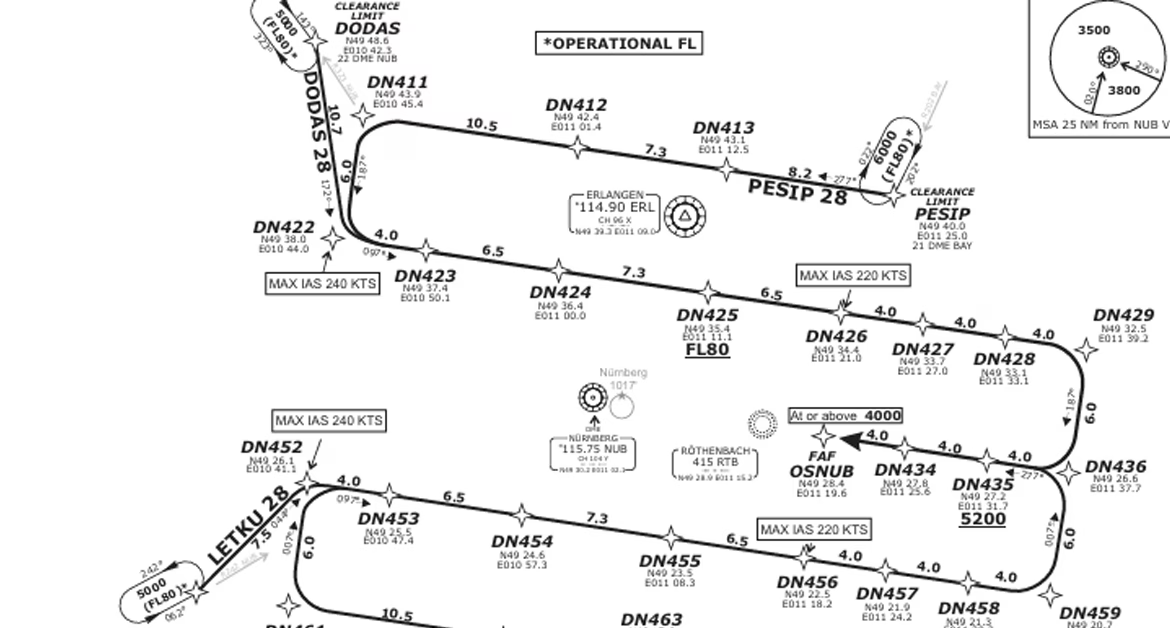
We did press to be fair; with Munich slowly not becoming an option, our only hope was Frankfurt or Herzogenaurach Airport, although I am sure with push come to shove, a chat with ATC about diverting would have been easier on an IFR flight plan than doing this trip VFR. It quickly became clear that I would have to stop our climb at FL100 as this would provide a better picture of the weather, and whilst I was contemplating having my tea in flight, I had to be careful not to enter any weather that looked ominous.
It was time for Sandwiches and a lot of monitoring of the flight path ahead, but it was manageable with a few bits of IMC, and with the Golze, I was able to carefully monitor the excess moisture being thrown off the storms to our west and have a clear route to the South. There was one point, though, when we noticed the big storms toward Frankfurt, and before we knew it, we had to descend due to the weather being thrown our way.
But once we descended to FL90 and noticed storms on either side of us decaying, to our east one cell and the west one cell, we were entering a part of the airspace that had significant convection and firmed my decision-making process to fly the way we did and always having more fuel onboard for any eventuality. It wasn’t difficult to navigate the layers of weather, and I think if we wanted to, I could have outclimbed it all at FL150, but with 3 of us onboard and a challenging journey home in a few days a possibility, I wanted to save the oxygen for the bits when we needed it.
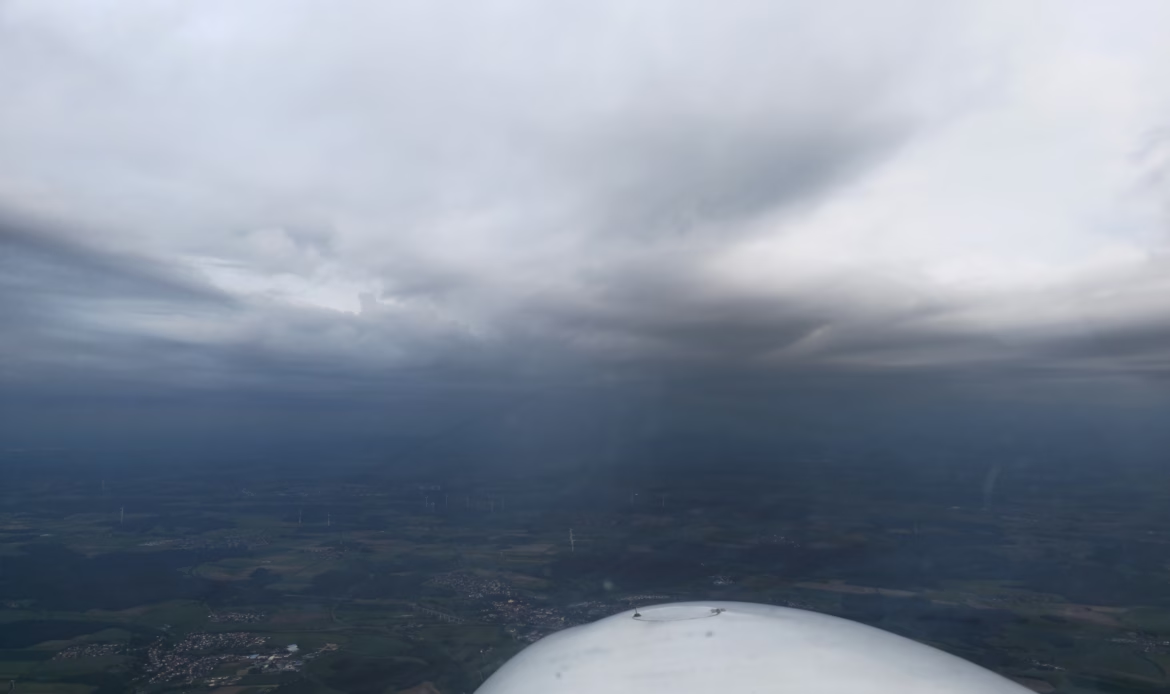
I was looking at the weather update and what I could see with my Mark 2 eyeball, and I think a deviation was required to the right, but ATC wanted us to go to the left. The only option I could see available to us was to fly over the airfield and then do a dogleg pattern to land on the reciprocal runway. Runway 28 was the given runway, but I then negotiated for Runway 10 due to the cell north of the airfield over the Erlangen Area. It was then that I noticed the large amounts of electrical activity and big precipitation to the south that was forecast to come this way.
Munich Radar came back and stated the tower could offer Runway 10, which meant a massive shortcut and avoiding any possibility of encountering the full force of the storms to our south. That didn’t stop it from raining a little bit as we descended on the base leg from the nearby cells. This I wasn’t worried about, it was the lightning and the pitch black to our south.
We flew a continuous descent approach as much as we could, and the flight was entirely smooth, so much so that we noticed the strong amounts of lightning to our south and couldn’t wait to get on the ground. The tops of these cells were over the airfield even though the storms were 30-40 minutes away to our south. We landed on Runway 10 with a landing time of 1915z, roughly 15 minutes before the GAT would close.
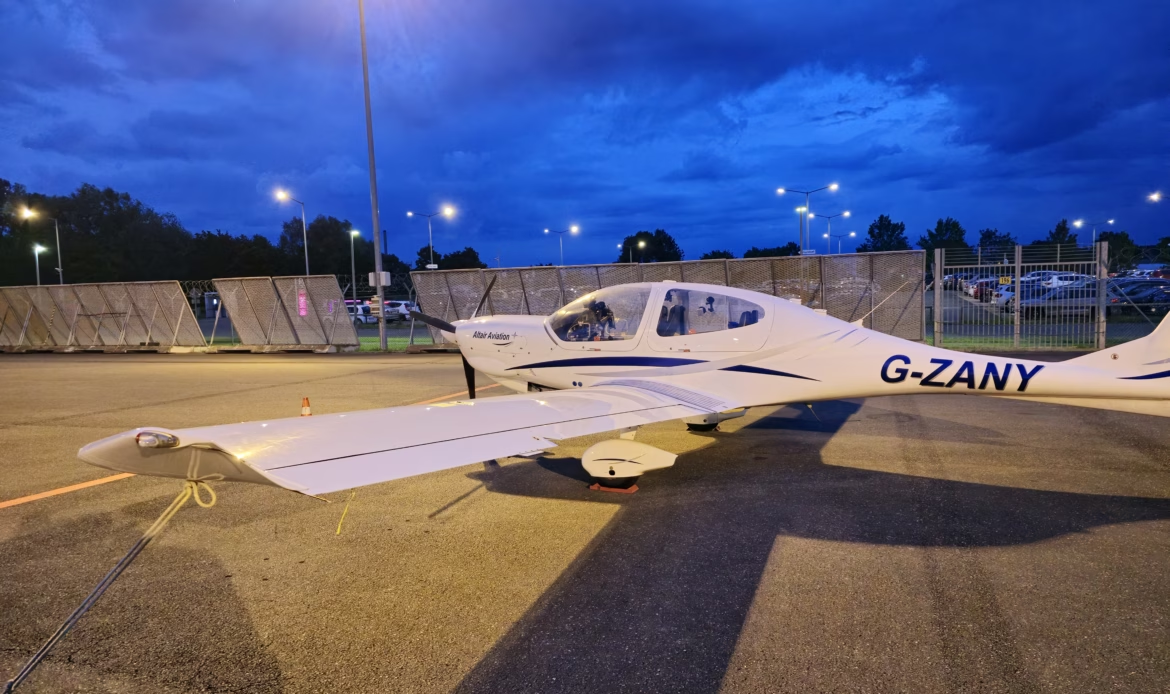
We followed the follow-me to the ramp, and it was empty, so it did surprise me that PPR was required and that there was some delay in getting that, as this part of the airfield was dead. It just seems that these things are overtly political when they happen, and sometimes you don’t understand the reasons for a reduction in capacity.
We quickly secured the aircraft, bearing in mind these storms coming up from Austria-Switzerland were supposed to be quite severe and had already caused Munich some issues earlier this late afternoon/evening. I also wanted to get a move on so the staff at the GAT didn’t charge me lots of money for going past their curfew of 21:30. Anyway taxi was ordered and awaited us as we arrived at the GAT, straight through the gate and into the taxi, hoping that I prepared the aircraft enough for the night storms.
ATC Flight plan and route flown –
N0128F090 GISDI1W GISDI DCT ALEXU DCT FUL DCT RITUP Z723 KOMIB T193
Filed ATC flight plan for EDLP-EDDN
ERTES DCT IBAGA
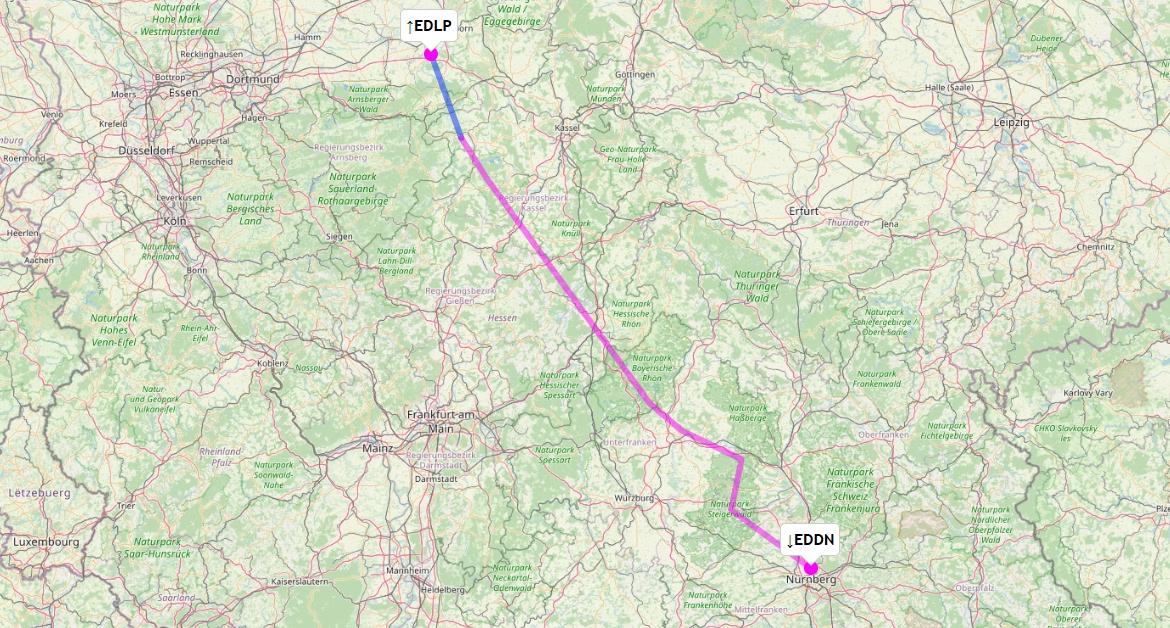
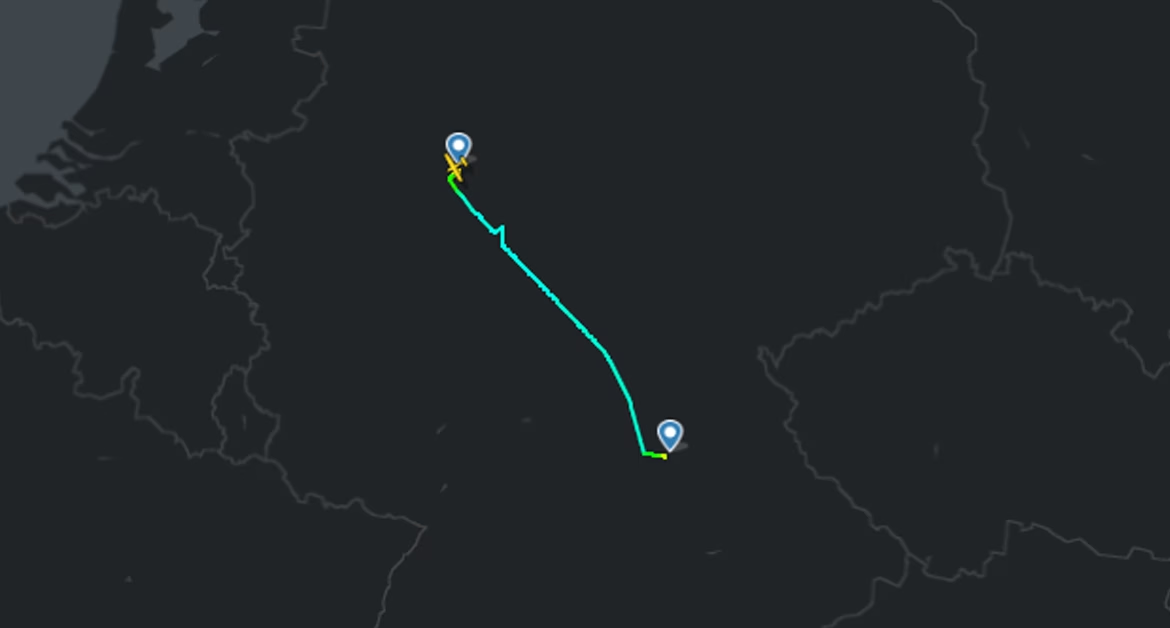
Stay in Erlangen –
This year, I managed to stay in the NH Hotel, which was a little pricier than the previous years but was well worth the comfort and quality that we expected on this trip. I also found the hotels the previous two years to be a little bit downmarket in quality, and drinking beer here can be brutal, as I found out the first year, but less so the second year.
We checked in, and I unpacked my equipment and started the process of recharging everything and downloading content, as this normally takes hours on end and considering the length of the trip this year, it was beneficial to start taking the content off the camera cards and onto my trusty portable hard drive. It didn’t stop me from eating the chocolates and a massive amount of sweets on the bar side.
By the time we freshened up, there wasn’t much in the way of food open, but with a fairly empty stomach we went to the nearest Irish Pub for some beers, of course, it started to rain, very lightly at first but by the time we walked the half a mile to the pub, it was starting to become torrential.
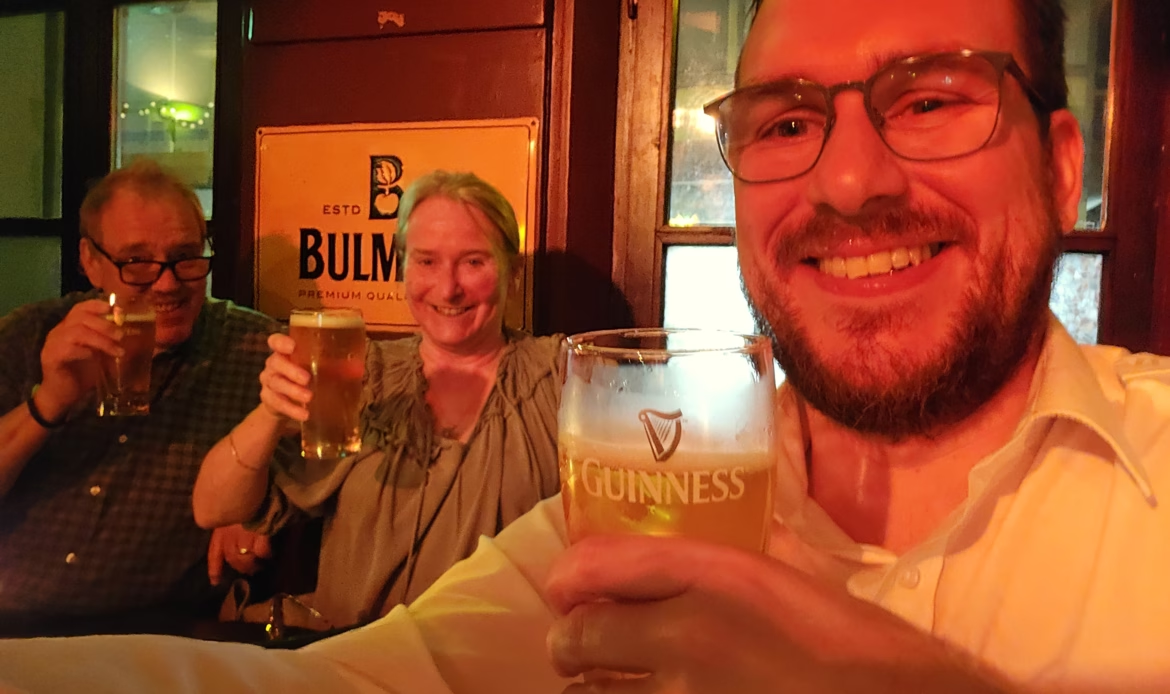
We started drinking, but it wasn’t anything local, so we went with it because I needed a drink after all that flying, but on an empty stomach. This was going to be fun tomorrow. It’s half a pint in and I realised the amount of lightning outside was rapidly increasing with the high amounts of rainfall. We all thought this could be an interesting evening, so we started ordering more booze. It could be a wee while stuck here.
We walked back, and the skies had cleared as the system moved north and dissipated into the early hours of the morning, as it then swung north-northwest towards the Netherlands. This would hopefully clear the air for the next few days.
After a relatively good night’s sleep, we met for a spot of Brunch. The place was LA BRASSERIE. Although the choice is limited, it is a very nice place in the middle of downtown Erlangen. This is a perfect spot for a post-hangover cure or a pre-berg warm-up – You can have a leisurely breakfast here, or lunch and even an after-work elaborate dinner – but most of all, it’s a short walk from the town centre. I started with the Schorle (Cordial) drink to hydrate before entering the Berg
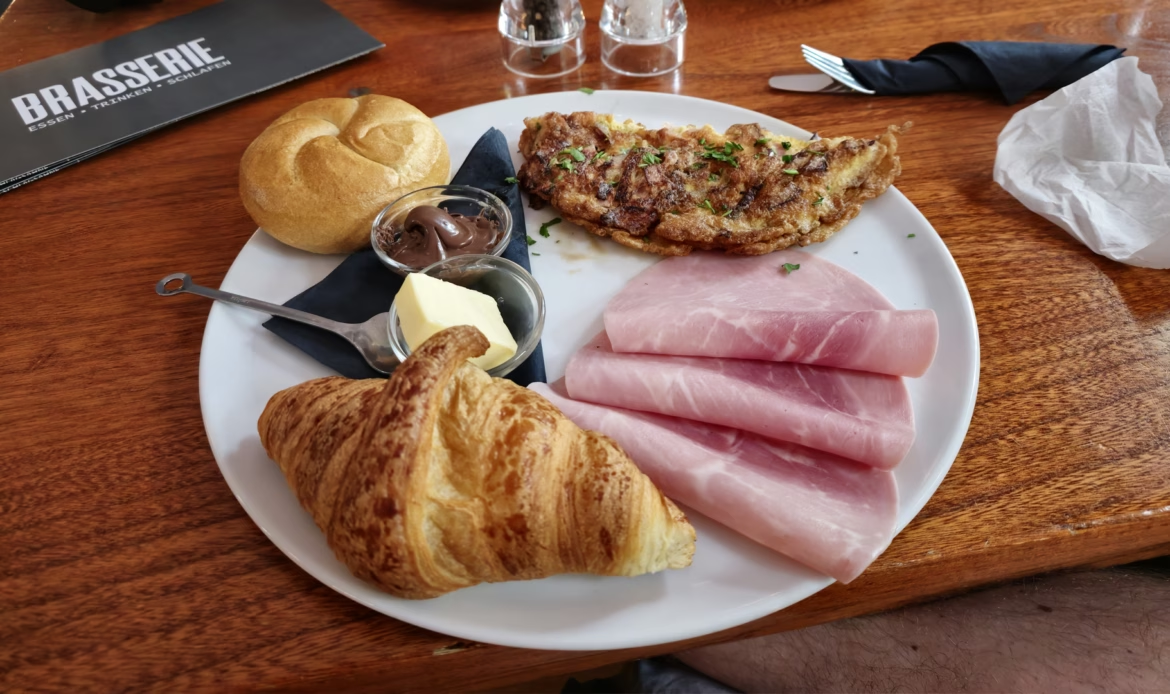
For brunch, I had a few slices of ham, a cheese omelette, a croissant with some Nutella on the side and a bread roll to accompany – this would do for now, but I am sure I’d be hungry after I start on the beers. Interestingly, the menu is conveniently in German for your convenience, so Google Translate comes in handy. Dinner plans were arranged for later, but I am sure I’d need to stop-gap with more food at the Berg.
This is the first time I’ve attended a weekday at the Berg, so it was interesting to see how busy or unbusy it was. But first was a quick walk around Erlangen. Taking a walk down the side streets towards the Botanischer Garten, a University botanical garden dating from the 19th century, with greenhouses for tropical plants.
The Erlangen Bergkirchweih attracts around one million visitors every year and transforms the area around the castle hill into a cheerful get-together with music, beer, dance, fun and games. With its charm and atmosphere, it enchants young and old, from near and far. This would be my third visit to the Berg. The first visit was after COVID, and last year after a quick visit to Košice.

Erlangen dates back to 1002, but this festival commemorates the birthday of the market square. It is one of the oldest festivals in Germany. Each year has a different design for the litre beer mugs. You pay a €5-EUR deposit and you either give the mug back for the deposit or take it home, as it makes a great souvenir.
For my passenger’s first experience of the Berg, it was preferable to enjoy a nice drink and have a reasonable chat. There was less music, but the atmosphere was still good enough for us. After visiting the Gardens, we made our way to the Berg up the main street (Hauptstraße Erlangen) and then took a quick tour of the funfair and what food was available. Frank elected to look at the strength of the beers and which one we would try, and we opted for the one I normally drink, which is about 5-6% if memory serves correctly.
The usual spot is the Erich Keller, which for some reason always seems to be the busier end and sometimes the noisier end with the fun fair on the other side – but ultimately this is almost near the main entrance to the Mountain, so it’s expected to be busy. First beer at 13:07, and 45 minutes late,r it was time for a spot of lunch, some bratwurst in a bun and some chips. This was to tide us over till Dinner later.
The team at the Berg were busy preparing for live music, which I believe would be later in the day. We had about 3 steins before we decided to move for dinner. The place may cause some controversy whilst in Germany, but who doesn’t have an Indian whilst abroad, and they are British?
At the time, Boliwood was voted the best restaurant in Erlangen, so I assumed this would be a good choice for food but “Spice Level” was something I missed as it was frequently mentioned in the reviews, but a very quick glance doesn’t mention the ferocity that’s about to hit your pallet. If there’s anything in life I’ve learned, it’s always to have the curry a few days before the return flight, and I’ll try to minimise the impact on the reader as to why.
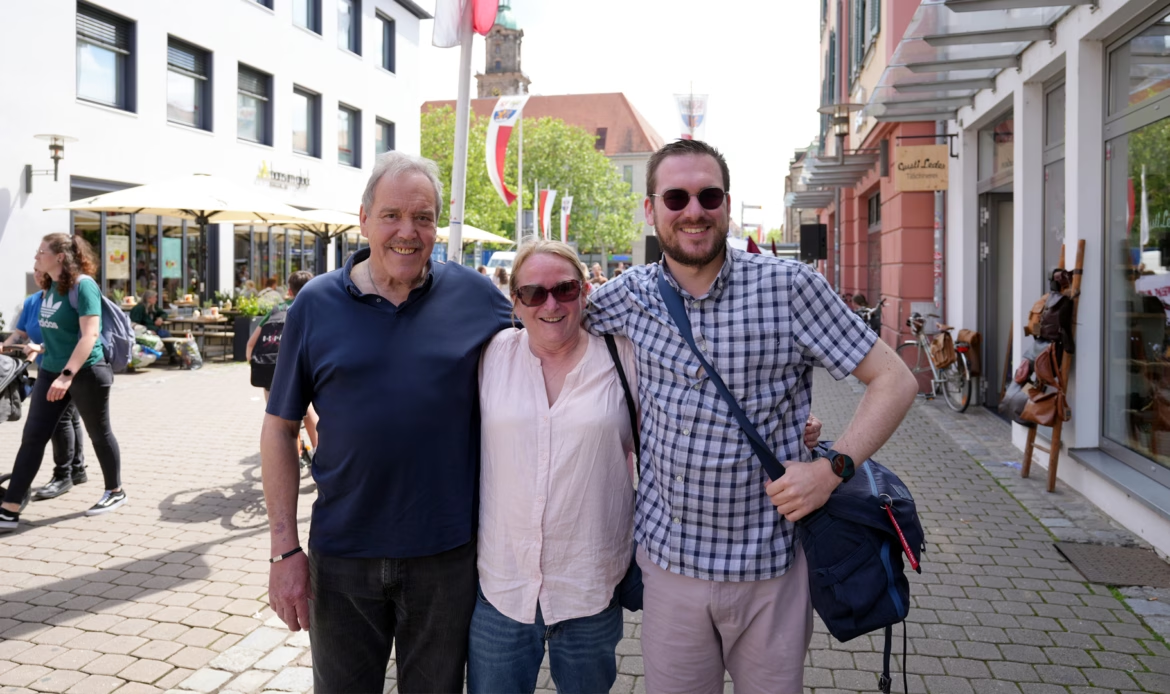
The starters we had were outstanding; we complimented the chef and stated the food was out of this world, and it was good food. Now, for spice levels, the waiter asked us what we would like, and we replied that we would go with a level 3 spice based on the fact that the gentleman serving us said this was a decent level to try. The food arrived, and we could barely eat two teaspoons before the wave of fire hit us.
We asked for a Raita to help, but this was unbearable; it was inedible. The waiter then explained that he told us that it was hot and that he would usually have level 2, one level under the one he said was “Fine”. The chef came out and told us that we had asked for that, which was correct, but we were misinformed. Anyway, the restaurant is good, but keep clear of anything north of level 1 or level 2 spice. They must use the hottest chillies in the world for their curries because it was fiery.
We had lots of beers to try and wash down the curry, but decided that we would return to the Irish Bar for more music and more beers. There was live music today, so we settled on a few more beers and enjoyed the rest of our evening. The pub that we visited yesterday and today was the Goldener Mond.
Today was Saturday and one of the busiest days the Berg has had in its two weeks. I was feeling a little under the weather from all the beers consumed and all the curry that we hardly ate. It did get me, sadly, but it was time to eat Brunch and make the most of the last drinking day before flying back to the UK tomorrow afternoon.
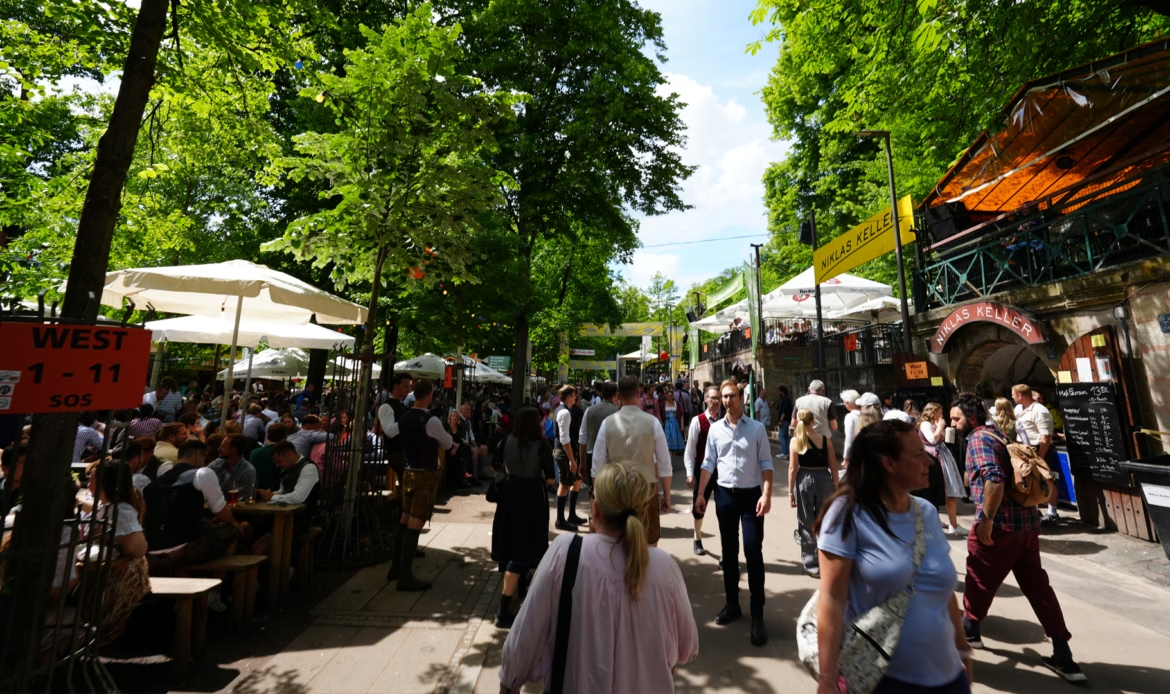
We returned to the Brasserie for lunch, and I needed a Burger and Chips to perk me up. It was the only way to get lively for the Saturday session, and after some hydration and a lengthy walk through the main part of Erlangen, we came back to the Berg. It was busier than yesterday, and by mid-afternoon, it became an awesome atmosphere. It’s these days that make you realise you’ve got the world at your feet: live music, great food and great people.
Stefan decided to turn up today after a long drive from Munich. His aircraft still wasn’t ready and on the G-Register, and as I didn’t fly him this year, he came for just one day before driving to Kosice to see his family. Dinner was a double Bratwurst in a bun, but I am sure I’d find McDonald’s back on the way to the hotel. After parting ways with a half beer/half lemonade, a traditional Radler, I decided to call it a night early, as I was flying back to the UK in over 15 hours.
I went back to the hotel and prepared some of my flight bag for the next day, and with the little weather information I had I tried to form a plan as it was proving fairly difficult and decisions had to be made during the last 12 hours with multiple plans, including a further additional stop due to the weather situation.

There weren’t many places that would open for breakfast yet, but with the length of the day ahead of us, it would be wise to find something, and although it was a fair amount of walking away, we managed to get into the only place sensibly open. Cafe Erlanger Teehaus is the place to visit, but an omelette was the light option before the long day of flying.
A quick walk back to the hotel to ensure we met our departure slot, but I realised I hadn’t fully packed and got my stuff together in the way I would like it before the flight. I prioritised sleep over packing for the journey home and didn’t realise how much time this was going to take. So time is of the essence here, and packing the night before should have been my priority.
I had to plan the remainder of the day in our taxi to the airport, which was more than enough time to get this done, although not perfectly ideal.
Weather Forecast –
The weather forecast for the flight back was not in the slightest practical. A cold front is moving through, but the details are scarce. The timing was almost perfect, but many troughs across BENELUX, France and the UK would provide the breeding ground for severe Thunderstorms. This was a very challenging forecast because the TAFs got better, then got worse, and it seemed that the only way back was to make multiple stops.
The cold front initially shouldn’t have impacted us, and a change of plan was required to ensure we had sufficient fuel on board for the flight into the UK.
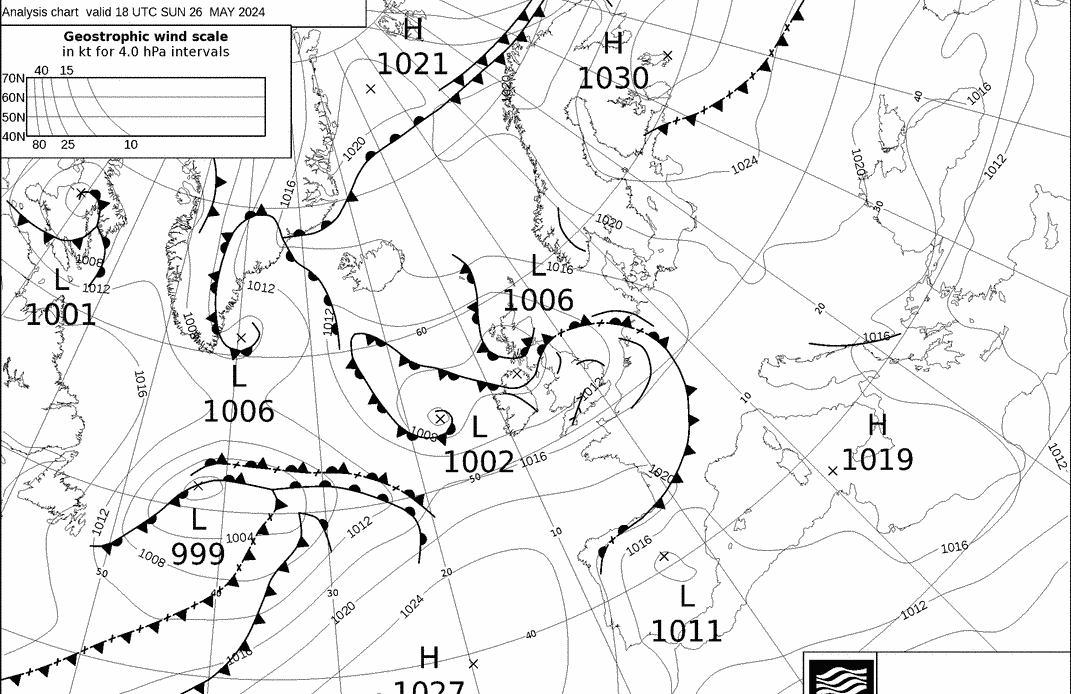
TAF for Nuremberg, Saarbrücken, Le Touquet, London City Airport and London Stansted on 26th of May 2024
TAF EDDN 261100Z 2612/2712 15005KT CAVOK PROB30 TEMPO 2612/2618 4500 SHRA SCT040TCU PROB30 TEMPO 2709/2712 4500 SHRA SCT050TCU=
TAF EDDR 261100Z 2612/2712 20009KT CAVOK BECMG 2617/2619 22004KT PROB30 TEMPO 2705/2708 BKN010 BECMG 2708/2710 22009KT=
TAF LFAT 261100Z 2612/2621 24010KT 9999 SCT020 BKN030 TEMPO 2612/2613 4000 -SHRA SCT012 BKN020TCU=
TAF EGLC 261058Z 2612/2621 21010KT 9999 SCT025 TEMPO 2612/2618 6000 SHRA PROB30 TEMPO 2612/2617 25016G28KT 3000 +TSRA PROB30 TEMPO 2618/2621 6000 SHRA=
TAF EGMC 261058Z 2612/2621 20009KT 9999 SCT025 TEMPO 2612/2618 6000 SHRA PROB30 TEMPO 2612/2617 25015G25KT 3000 +TSRA PROB30 TEMPO 2618/2621 6000 SHRA=
TAF AMD EGSS 260625Z 2606/2712 15007KT 9999 SCT025 TEMPO 2606/2610 6000 RA BKN006 PROB40 TEMPO 2606/2610 3000 +SHRA BKN004 BECMG 2610/2613 24012KT TEMPO 2610/2621 6000 SHRA PROB40 TEMPO 2610/2618 25016G26KT 3000 +TSRA BKN012 BKN020CB TEMPO 2709/2712 6000 SHRA=
Change of plan –
The original plan was a single stop, like the original outbound plan, but we would fly via Saarbrucken for fuel, with the other potential being Luxembourg, but the weather forecast, as described above,e was not ideal, so a slight change of plan was required because of the severe weather in the UK. Whilst we had to navigate lots of convective weather en route, the issue of severe Thunderstorms in the London TMA prompted me to make a fuel stop in Le Touquet.
Le Touquet is in the direction of travel, and last-minute notification should be given to customs and the airport for arrival/departure. Whilst this wasn’t ideal and the budget for this month’s flying was far exceeded, it would be safer to execute a fuel and go in Le Touquet planned than have issues going into the UK without enough fuel to divert if needed. The headwinds due to the stronger-than-forecast cold front meant that we would not be able to fly the direct routing as otherwise suggested a few days before.
Return Journey VLOG –
Flight to Saarbrucken –
During the taxi to the airport, I had to prepare the next 3 sectors, which was a change of plan from what I had prepared before the flight. The additional stop in Le Touquet required me to rewrite two of my PLOGS, with the original sector to Saarbrucken not requiring any re-work. This was frustrating but required on a day like today, where high levels of concentration were required.
My ideal scenario is to have the plan before any journey to the airport, where you gain your composure and mentally prepare for the flight(s) – it is best to get the hard work done outside of the flight environment and have the flight plans prepared. Annoyingly, the signal on the motorway to the airport was slow, so getting my flight plans from CFMU and checking any slots was a slow process, but we got there in the end.
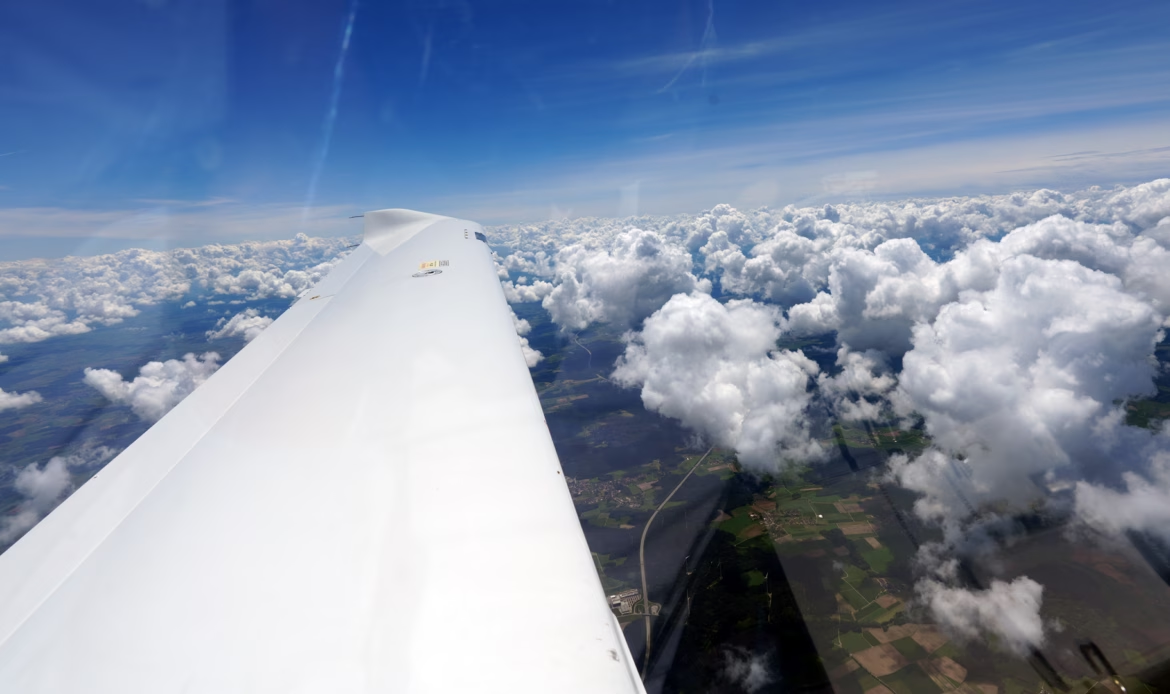
Arriving at the GAT after a trip away for the weekend is always an experience. You pay for your experience, they ask you if you need fuel and if you’d like to have your passengers brought out to you. It’s a very special feel, and you get your money’s worth at these big airports. I am a regular here, my third trip, so it’s always good to see the place is still here. The only downside here is security wants everything off into small boxes and laptops and iPads out, which for me is a nightmare with all my equipment, but it works.
I went out to the aircraft to place the cameras in and then prepared the aircraft for its eventual departure. Fuel arrived (Sadly, we couldn’t do this on the arrival as we arrived so late), and then I continued the rest of my walk-around checks as the passengers arrived and settled in. I loaded our bags, which would remain in situ for the whole trip to the UK. I then completed one last lap around the aircraft before jumping in.
It was warming up, so the cameras decided to keep quitting, but eventually, we taxied out for departure after getting our ATC clearance. As I read back the instructions wrong, the controller decided to give us progressive taxi instructions and various hold shorts before we got to our turn for departure.
After one arrival and one departure, we lined up, ready for the trip back to the UK. A quick observation of the weather at this point, it didn’t look too bad. It was a long take-off roll, a hot and heavy departure above my favourite forest. A few lumps and bumps as we climbed out, the thermals starting to get going at this point. I think it would have been far preferable to depart earlier, but this was now our flight, and we had to own it.
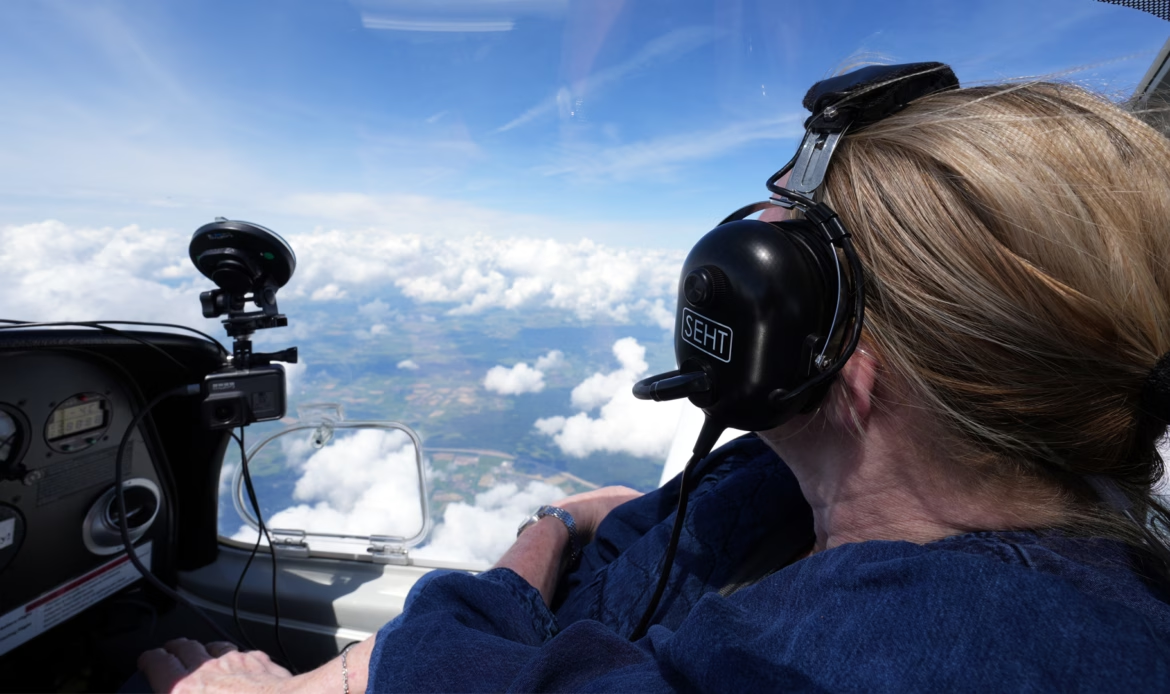
Climbing up, I noticed the weather had started exploding an hour ahead of the forecast, and the cap was broken. TCU started to develop quicker than we could climb – this meant a lot of weather avoidance and tactical changes in our heading to ensure we could avoid the weather. Whilst I could have probably flown through it, the weight of our aircraft, the passenger comfort and whatnot means that we would have been thrown all over the place uncomfortably, and the rate of growth to me was CB-esque, which was in the forecast for most of the region.
Eventually, we got above the weather and got a lovely route directly towards Saarbrücken, avoiding the route that we had planned in the system. It’s nice when you get this route direct to what is probably closed or military airspace that we have approval to fly through due to it not being active at our level. This shortcut meant we would save some time and land on schedule.
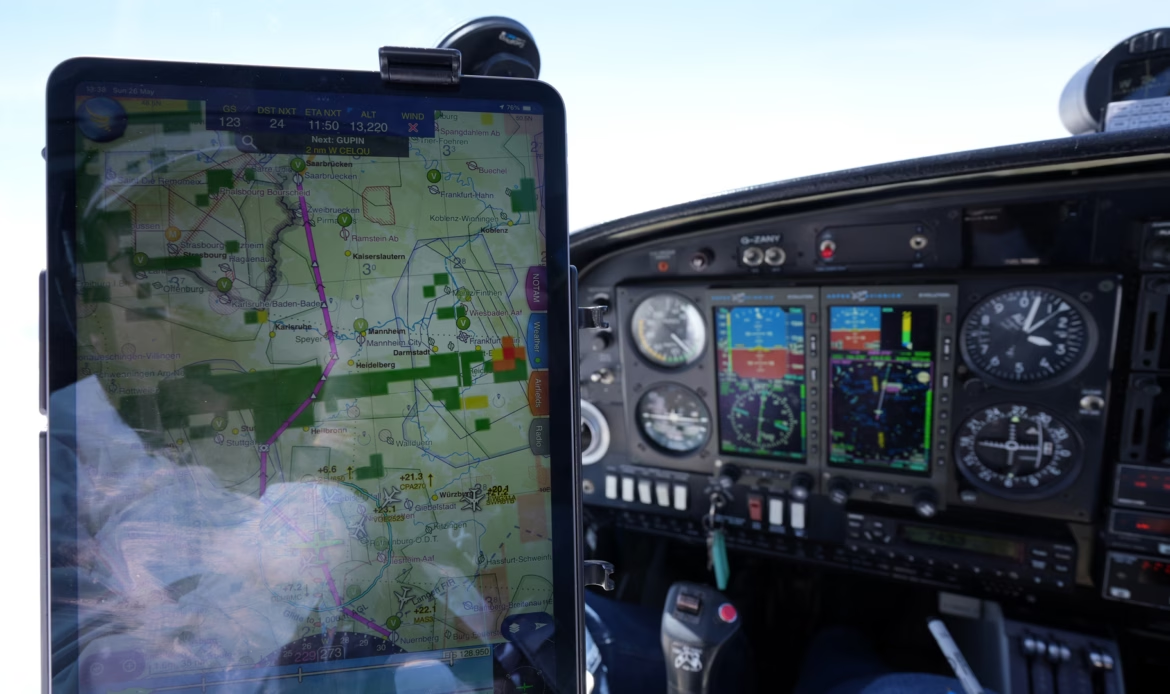
I did notice a lot of weather below, but for the majority of the flight, it was smooth flying conditions until the latter half when the winds picked up and became variable. The sky above us was becoming milky, and I knew we were approaching the front, so we elected for a lower level where winds wouldn’t be as violent. Although we experienced moderate turbulence, this calmed down as we went from FL 130 to FL 100.
I started looking at two things. The route up France to Le Touquet, but with worry, the route into Saarbrücken and away from the airport, which was about to be hit by the cold front, was a lot quicker and a lot more punchier than forecast. This meant that what was CAVOK was now a fairly fast-moving cold front with Showers of Rain and CBs, which we could not safely fly through.
TAF COR EDDR 261147Z 2612/2712 20009KT CAVOK TEMPO 2613/2624 SHRA BKN040CB BECMG 2617/2619 22004KT PROB30 TEMPO 2705/2708 BKN010 BECMG 2708/2710 22009KT=)
TAF for Saarbrücken enroute on 26th of May 2024
As we got closer to the airport, we saw the depth of the front and began our descent into the airfield with a few showers already popping up above us. At some points, we could not see through the screen ahead due to the rainfall. With ATC negotiating the quickest route with faster-moving traffic ahead of us, given priority, we eventually landed in a newly wet Saarbrücken.
We vacated the runway and were given guidance on our remote stand. After some checks, we shut down and had a conversation with the operations handler who arranged our fuel. Unfortunately, we had to wait a little while as a medivac had arrived and had priority over us, but as soon as we could refuel, we went over to the operations room to pay in the office. We were then allowed to use the briefing facility for a small fee to replan and delay our flight to Le Touquet.
This decision-making was a tough one, but I knew we had a few hours spare to wait around before the flight to Le Touquet because of customs, but we would be hard-pressed to make our SLOT into the UK.
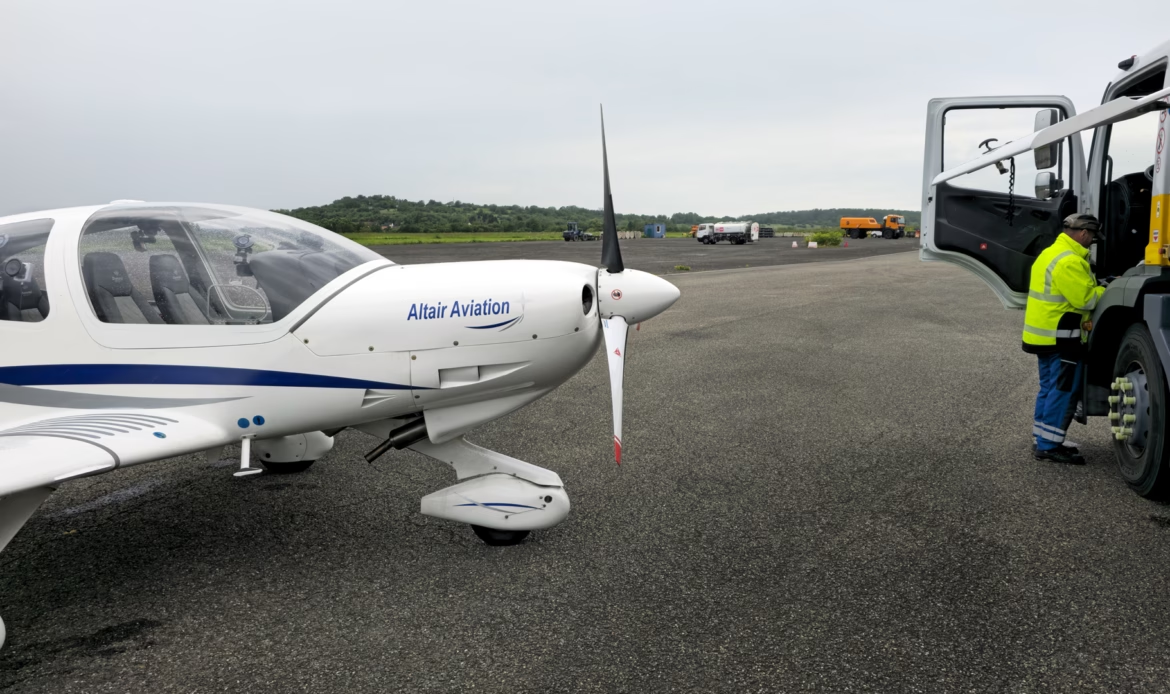
ATC Flight plan and route flown to the UK –
N0128F140 BOLSI1G BOLSI Y166 DKB N869 GUPIN L173 LBU/N0129F120 Z3
Filed ATC flight plan for EDDN-EDDR
TAGIK/N0127F120 Z818 RINEX/N0127F100 Z818 LADAT/N0125F100
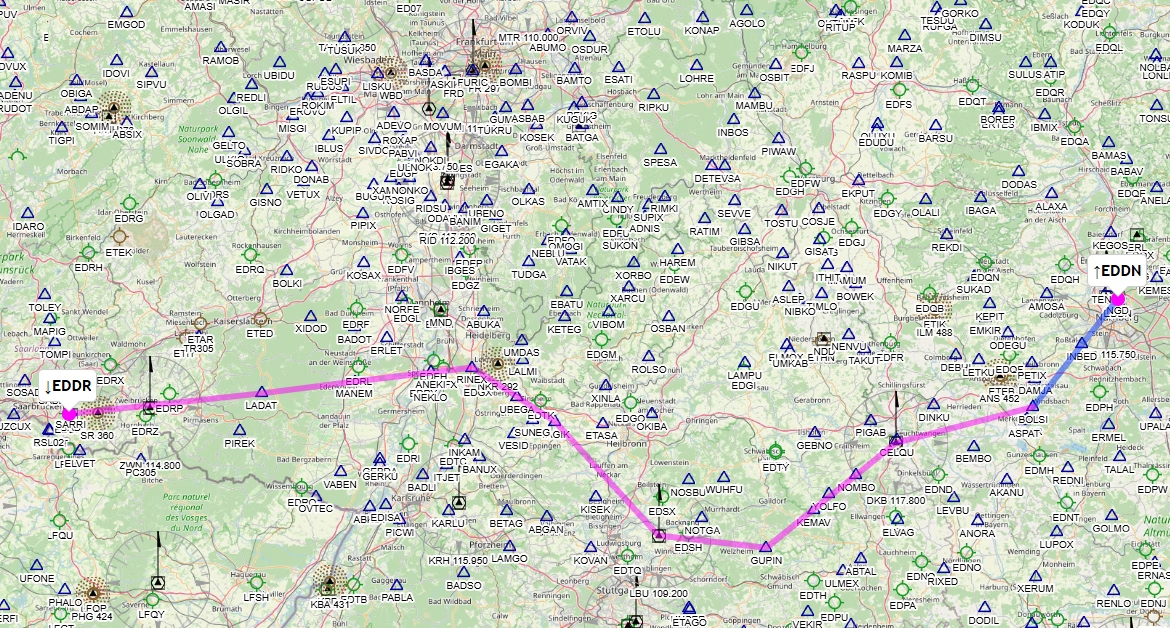
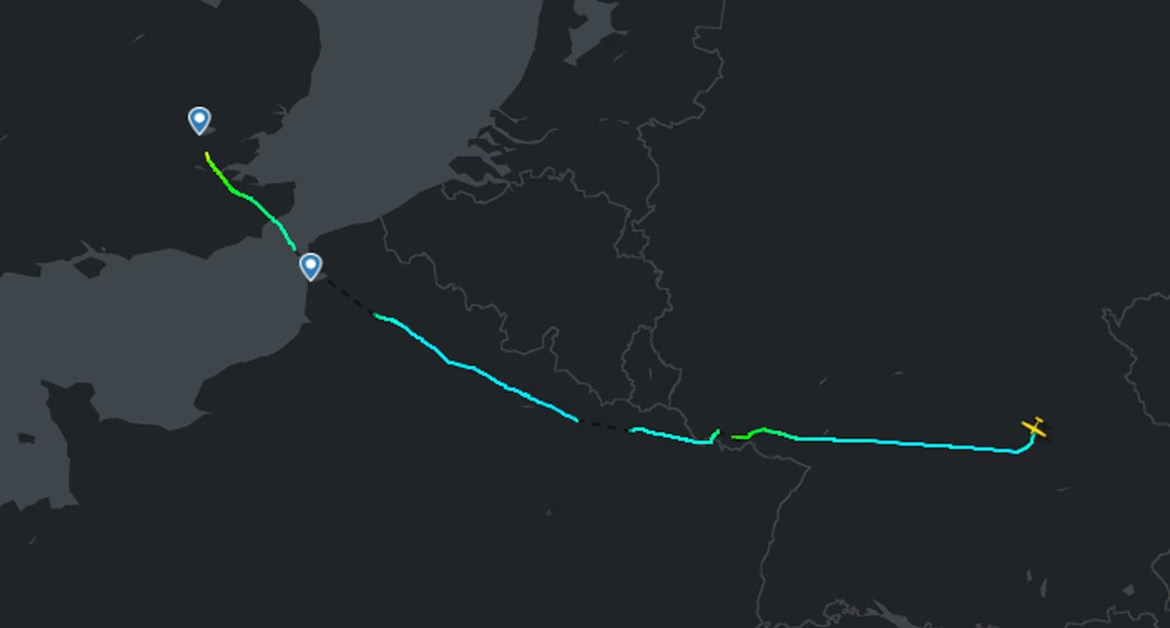
Flight to Le Touquet –
A quick check of the weather, a quick check of the flight plan, and if we were to head out to the aircraft now, we would probably be the right time to make a run for it to the UK and to make our departure SLOT from Le Touquet, which seemed to be fairly stable. I’ve known the SLOT to change frequently, either getting worse or getting better, but as I was at least 2 hours from our 2nd and final stop of the day, it was prudent to get a move on.
Once we had paid OPS and dealt with them, the airport became dead, and we had to walk across the Apron to our stand, which, whilst it was a few hundred meters, I did find peculiar. Either way, what was noticeable was that this was a Flybe Dash 8 graveyard with half the fleet here. Once we started up, we got our clearance, but with a weird question and a detail to calculate performance, if we could meet the request.
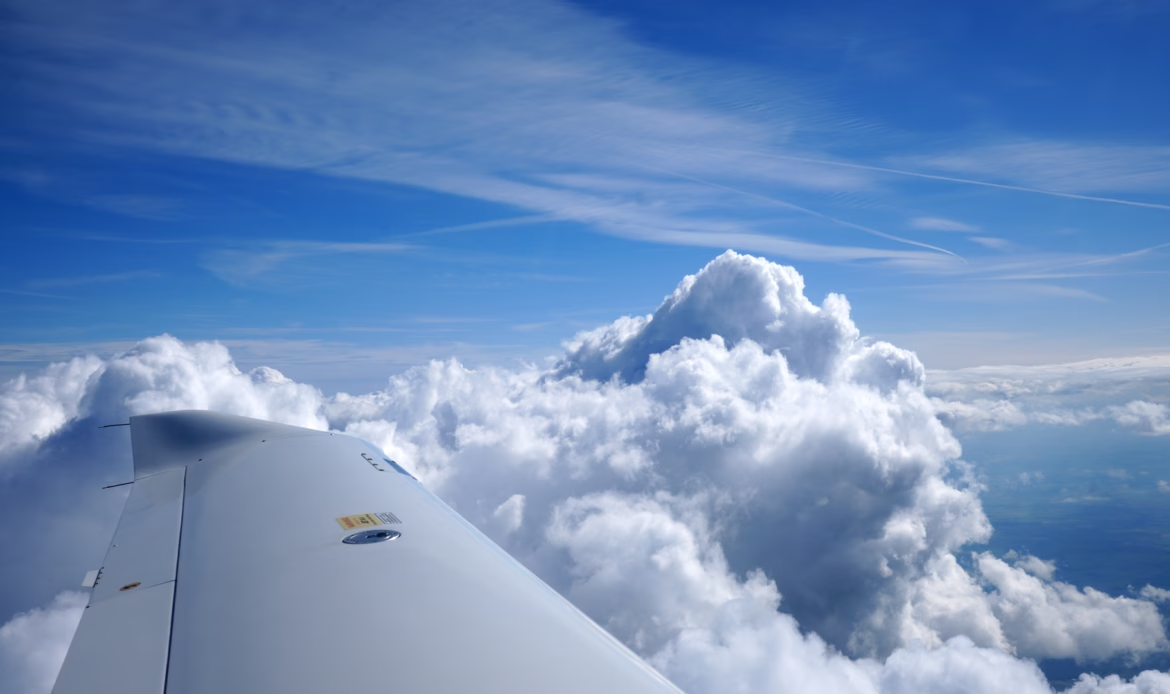
It took me by surprise because, knowing we were heavy, I didn’t think we would make the level required on that SID of FL80 13.3 DME from GTQ. So we got offered the ZWN 5W departure with a right turn in the climb to GTQ. This meant we would be FL80 for the handover to the next bit of airspace.
We flew the departure and after handing off to Langen Radar, we were offered a preference on the level and were given Fl100, and given a further right turn to GTQ away from the SID that we were flying. Looking at the weather, it had improved, and although we heard another aircraft on frequency stopping its climb at FL100 for its parachute drop, I was sure that as we headed away from the cold front, the situation would improve.
We were handed over to the Strasbourg approach and given a nice shortcut, and as this was our longest planned sector of the whole trip at almost 2 hours in flight time, cutting that down and having more reserve into Le Touquet was beneficial. It did make me think that with these stronger-than-forecast headwinds due to the cold front, if our ETA had been reasonable and we hadn’t had to land somewhere short, a trip to London from Saarbrucken with both strong winds and the weather situation wouldn’t have been possible.
As we progressed further north, I discussed with the approach controller if we could climb up, potentially FL110 or FL120, and if that wasn’t possible, a few deviations would be required, but to reduce controller workload and myself, a climb up would be preferable. As we got closer to this weather, we needed both a climb and a deviation as things started picking up after the front had moved on, presumably from surface heating and the recently fallen moisture.
A further climb was needed a short whilst later as flying at FL110 was not sufficient to outclimb this weather that was popping up, but it didn’t take long before we hit a band of showers with relatively high-level tops associated with a trough, and as we were now with Paris Control and started interacting there arrivals/departures. Because of this, we requested a further climb to FL130, and it was pretty close to needing high, but with the forecast winds, I didn’t want to go any higher just in case it would impact me climbing further.

This weather on the radar appeared to have strong radar returns, so I was cautious and aimed to overfly the radar returns that looked least threatening. I decided to tighten up our belts a little, as we only just got above the tops of what was a very thick cloud layer below. We got turbulence occasionally every few moments for about 20-30 minutes until it cleared up.
It felt eerily similar to turbulence I’ve had when on airliners flying near Thunderstorms, so it was obviously convection, just not the sort of stuff one would want to fly into in a light aircraft. As we cleared this trough of weather northeast of Paris, we eventually got a descent and handover to Lille, who gave us further descent and a direct for the RNP runway 31 into Le Touquet.
This approach was fairly bumpy, with some random unexpected moderate turbulence on the approach before lots of windshear as we approached the runway. A quick discussion with Le Touquet about our SLOT, which we had 30 minutes or so to meet, and ATC was very aware of it. He organised our fuel and met us as we pretty much parked up on the stand.
Over to the reception area to pay our fees and get our passports stamped for the short flight back to the UK. It was almost over, and the trip that we had planned since last year over dinner was coming to a fine close, just the hurdle of Thunderstorms in the London area that was clearing through.
ATC Flight plan and route planned –
N0128F100 GTQ9W GTQ DCT MTZ DCT MMD M163 SUIPE H9 REM B3 BILGO H20
Filed ATC flight plan for EDDR-LFAT
XORBI H40 ABB
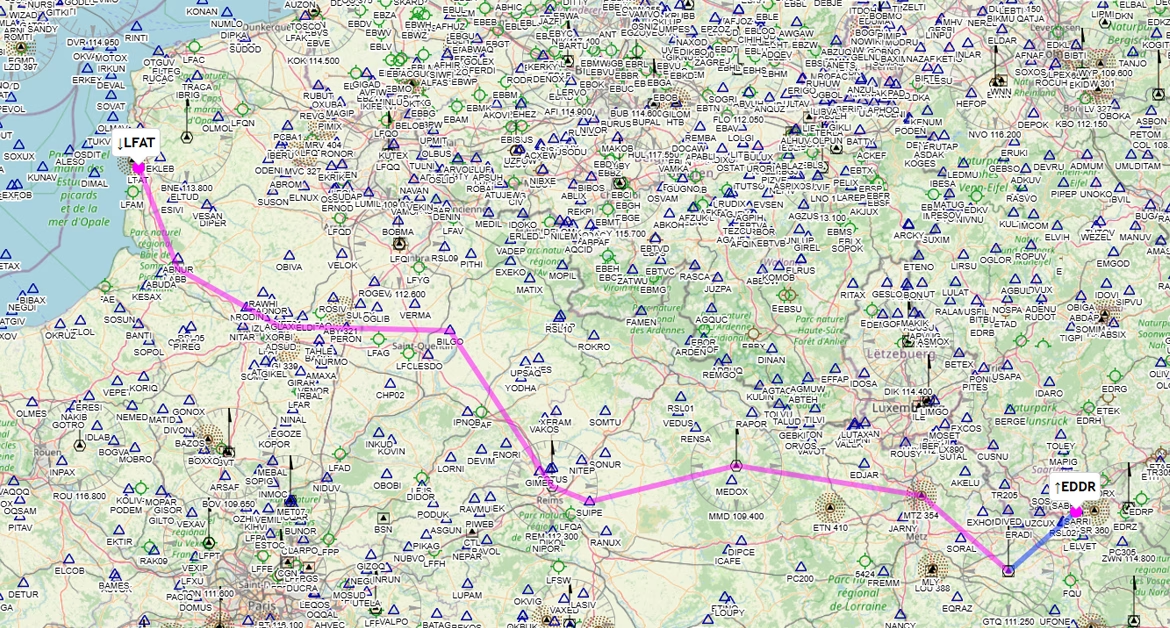
Flight to the UK –
After refuelling, we quickly checked the aircraft over and made sure that whilst we were away, nothing had knocked into it or anything had fallen off, no fuel was leaking, and everything was as it should be. The warm engine and engine starts quickly.
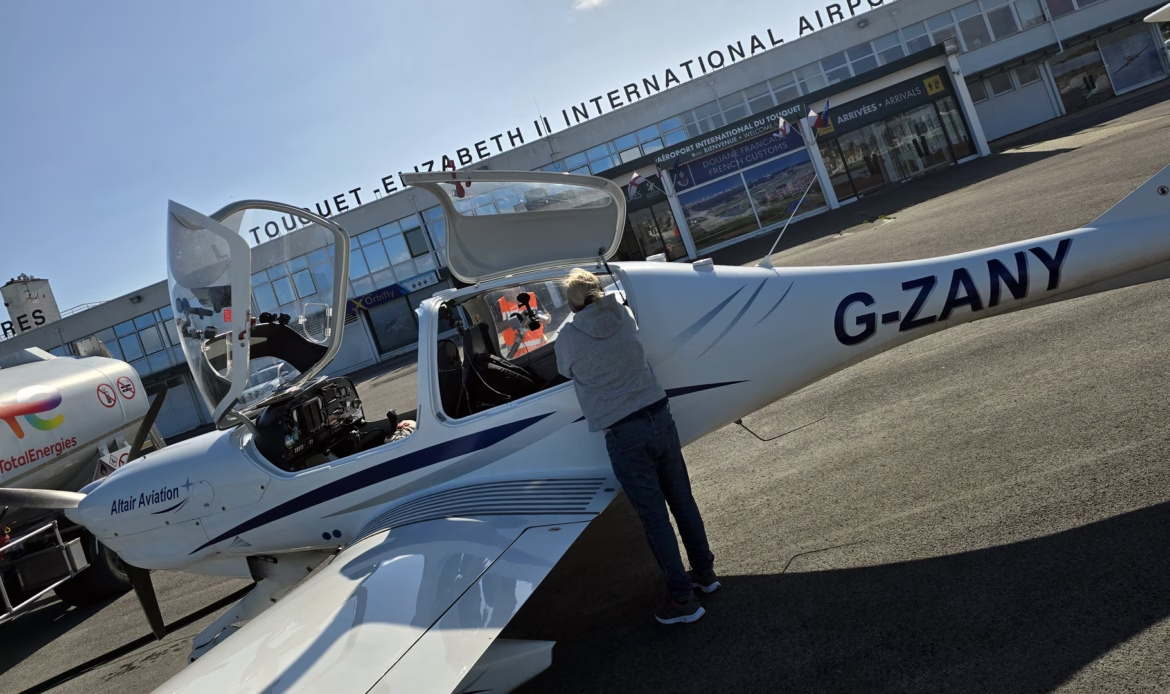
A quick taxi out to meet our slot and the aircraft is ready for another flight, with our checks completed at the hold we lined up for the BNE departure like second nature having visited here many times before, but never in such quick fashion our last sector back to the UK, slightly later than scheduled due an ATC slot, a quick left turn and up to FL80 for the crossing of the channel.
It was very clear, very smooth and although we could spot the TCU and CBs in the distance from the Thunderstorms which had caused the London TMA to be very busy this afternoon. It was a reflection moment, that I had completed another trip safely as we flew across the English Channel and back home for what was a very safe but energetic-filled trip.
Nothing beats flying home, but also nothing beats leaving it for a short whilst or a long trip away and whilst this trip was very short, it had some good learning curves but would be over in 54 minutes and 42 seconds, a few lump and bumps as we entered the usual layer at 4000ft and into Stapleford’s domain.

A sporty but decent landing with over 1000 miles of flying completed. Whilst not as impressive as last year’s trip to Kosice, the challenges that I faced this year are commendable. We taxied back to the usual parking spot, and everyone onboard was glad to be safely back in the UK.
ATC Flight plan and route planned –
N0128F080 BNE B24 RUCAC A30 IRKUN M91 LYD DCT DET
Filed ATC flight plan for LFAT-EGSG
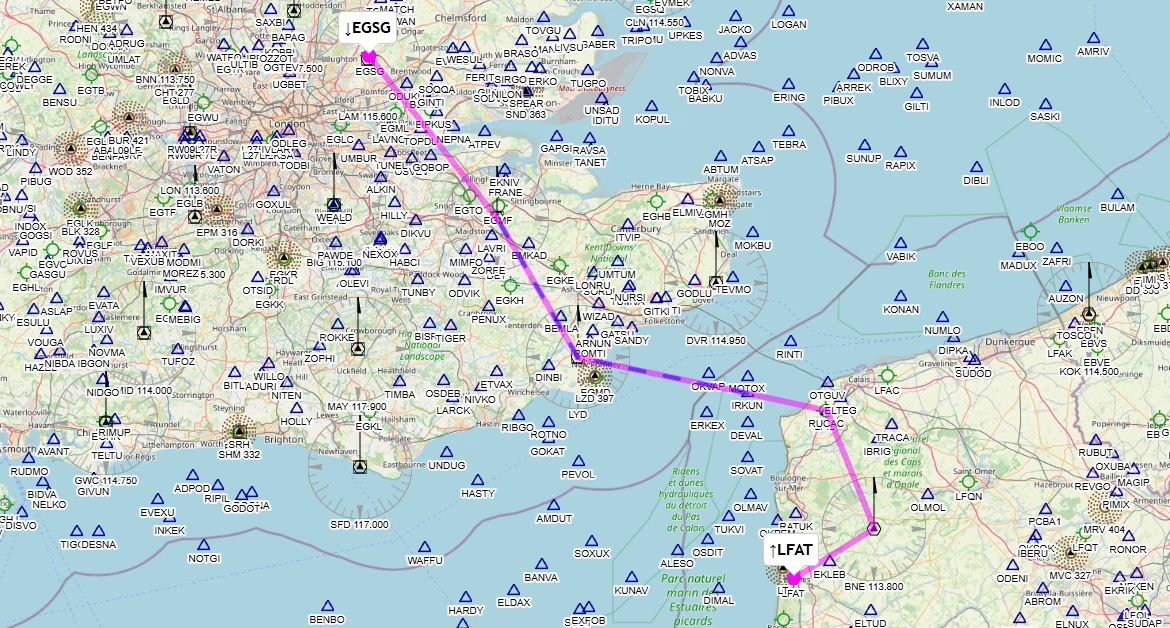
Outcome & Costs –
The biggest challenge of this trip wasn’t just the fact that we had a lot of weather to deal with, a lot of changeable weather to deal with, but carrying 3 passengers over long distances with multiple stops was a huge challenge. I am more keen on staying above the weather and flying for lengthy periods, but occasionally, this doesn’t happen.
This is one example of a trip that required a lot of changes in a short period and required both expertise and the tools and resources to change the plan, but also the fact that you must descend and climb through challenging weather conditions to get from A to B. Convective weather is not to be messed around with and can be very dangerous but if done safely, and a lot of experience and airmanship is required, it can be achieved reasonably successfully.
The logistics of this trip were difficult, but the outcome was another visit to Erlangen, two new airports visited and a memorable journey in what was perfect timing.
Airport Costs –
The final bill was split into the following;
Rotterdam Fees
- Landing €27.59
- Parking fee €0.00 EUR
- Handling fee €36.00 EUR
Jet A1 Uplift: €84.46 EUR (£70.80 (41 Litres) @ £1.73 litre
Sub-Total: €148.05
Paderborn Fees
- Landing fee €13.33
- Parking fee €4.17
Jet A1 Uplift: €129.06 (£108.31 (54 Litres) @£1.71 litre
Sub-Total: €146.56
Nuremberg Fees
- Landing fee €10.95
- Parking fee €32.63
- Handling fee €25.03
Jet A1 Uplift: €94.40 EUR (£79.22 (40 Litres) @£1.98 litre
Sub-Total: €163.01
Saarbrucken Fees
- Landing fee €15.47
- Handling fee €16.66
Jet A1 Uplift: €166.95 EUR (£140.10 (53 Litres) @£2.64 litre
Sub-Total: €199.08
Le Touquet Fees
- €36.00
Jet A1 Uplift: €113.20 (£95.00(40 Litres) @£2.37 litre
Sub-Total: €173.20
Total Costs Airports: € 217.83 (£185.55)
Total Jet A1 Uplift: €588.07 (£500.92 (228 Litres) @£2.19 litre
Sub-Total: £805.90
Erlangen Costs –
Food, Drink & Leisure Costs: £216.20 (Food/Taxi’s split amongst us)
Accommodation Costs: £155.00 per night per person
Total Accommodation Costs: £465.00
Sub-Total: £681.20
Flying Costs –
Aircraft Charges: £1890.38 (@ £183 per hour (10 hours 20 minutes flown??))
Airport Fees: £185.55 (As above)
Nav Charges: £56.20
Oxygen Refill – £20.75
JetA1: £285.45
(Wet Rate drawback) Credited £215.47 (-) (GZANY) (228 litres at EGSG rate) £0.90
Total Cost –
Total Costs (Non-Aviation): £681.20
Total Costs (Aviation): £2438.33
Total Costs (All): £3029.53
Version 1.1 – Last Updated 10/04/25
Aircraft –
The aircraft is a DA40 TDI, which uses a Thielert “Centurion” 135-hp (101 kW) diesel engine and burns diesel or jet fuel. It has a constant-speed propeller and FADEC (single lever) engine control. G-ZANY is based at Stapleford Aerodrome, Essex, UK and was delivered as new in 2003.
Read more about the aircraft on the dedicated page
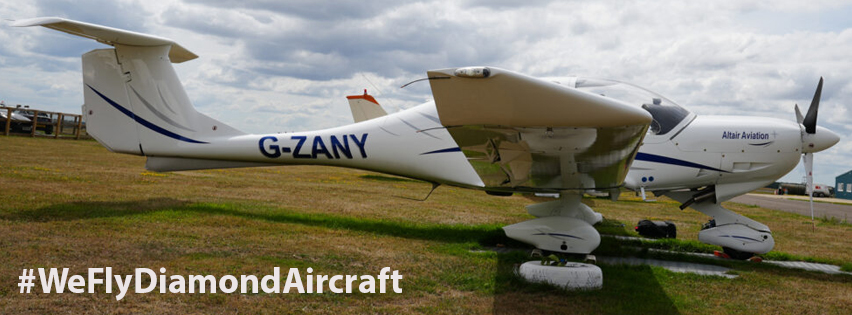
Supporting the YouTube Channel –
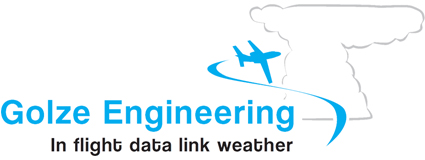
Support the YouTube Channel –
Welcome to The FLYING VLOG…
I am a current PPL(A), SEP (LAND), IR(A) SE/SP PBN, IR(R) & Night holder. Flying the world, exploring its hidden treasures. Taking pictures and vlogging the journey; I hope I can provide you with an oversight of my progression as I develop my skillset and airmanship in exclusive videos on my YouTube channel.
Now flying IFR in the Airways of Europe & beyond. Bringing you an exclusive niche to YouTube, flying in the same skies with commercial airliners.

